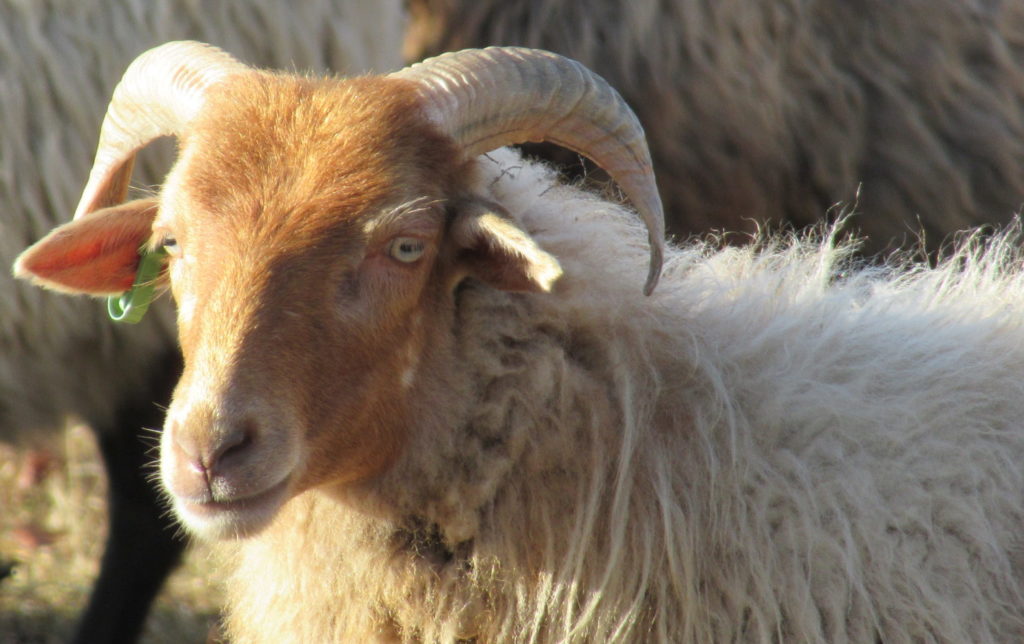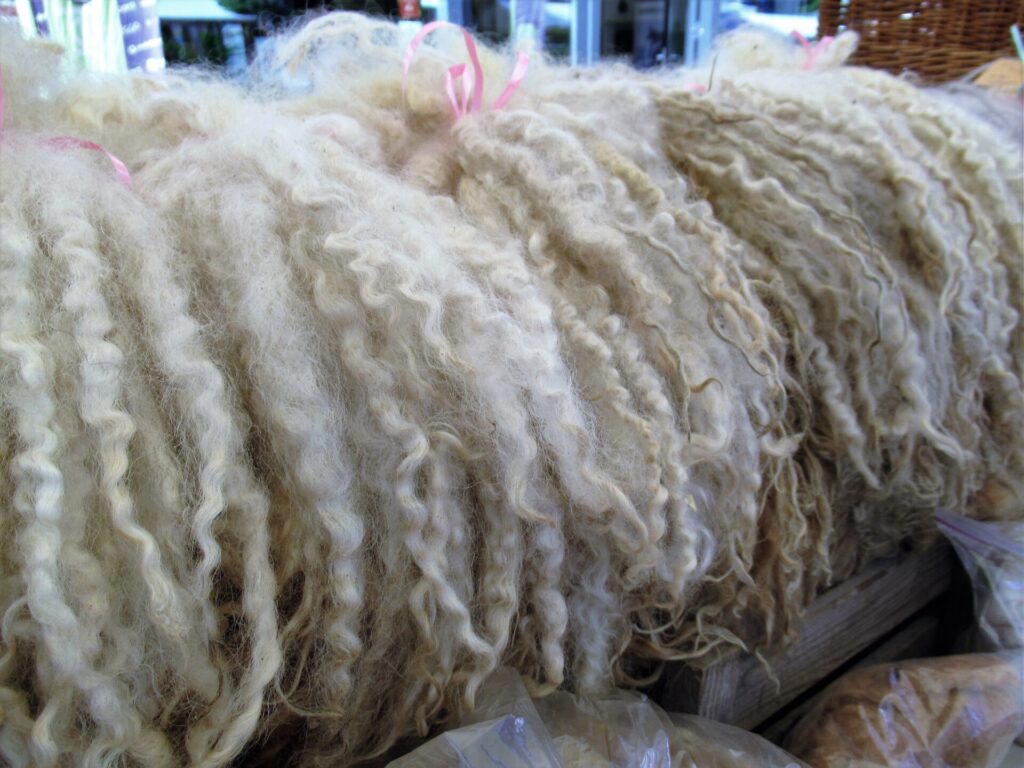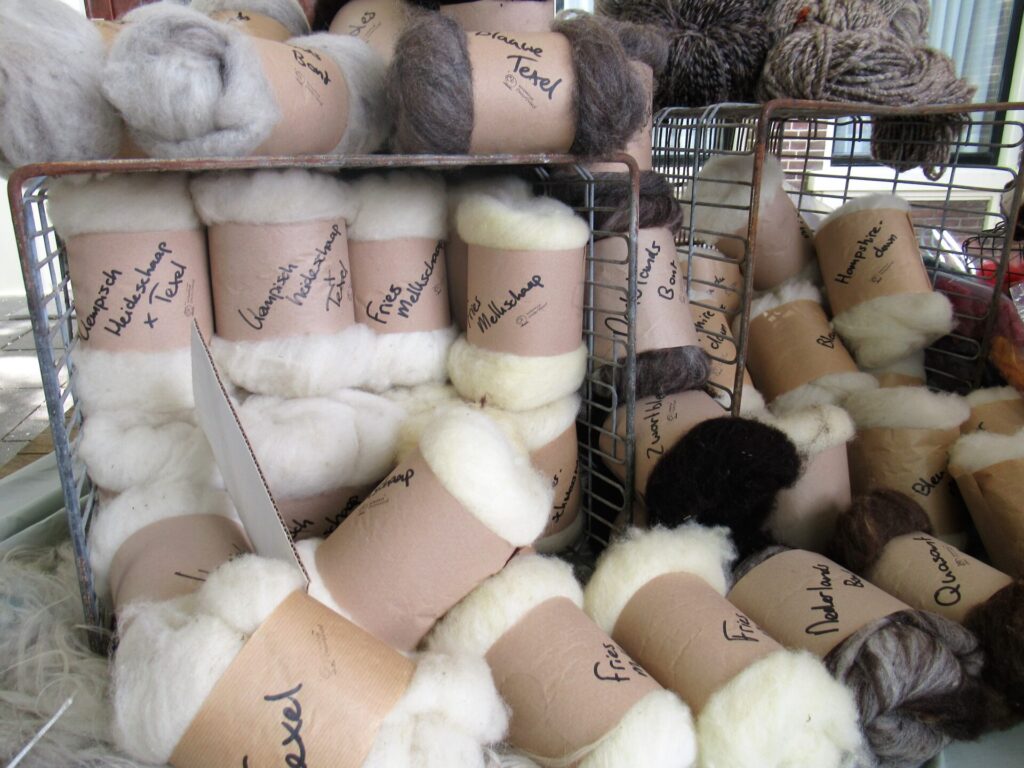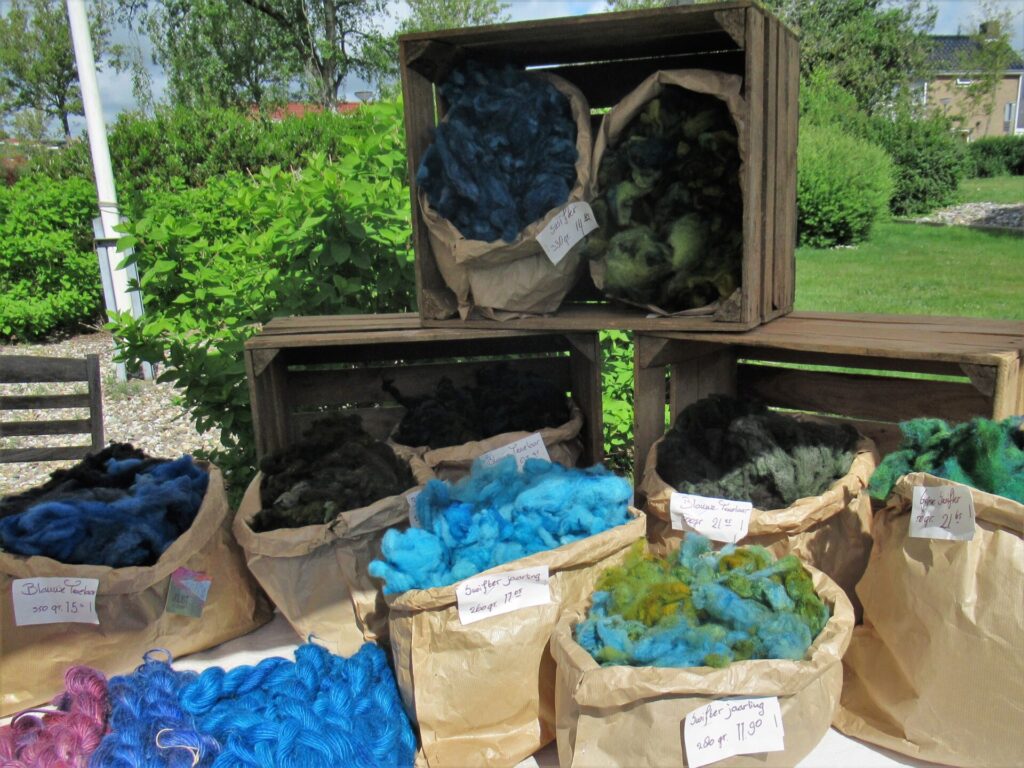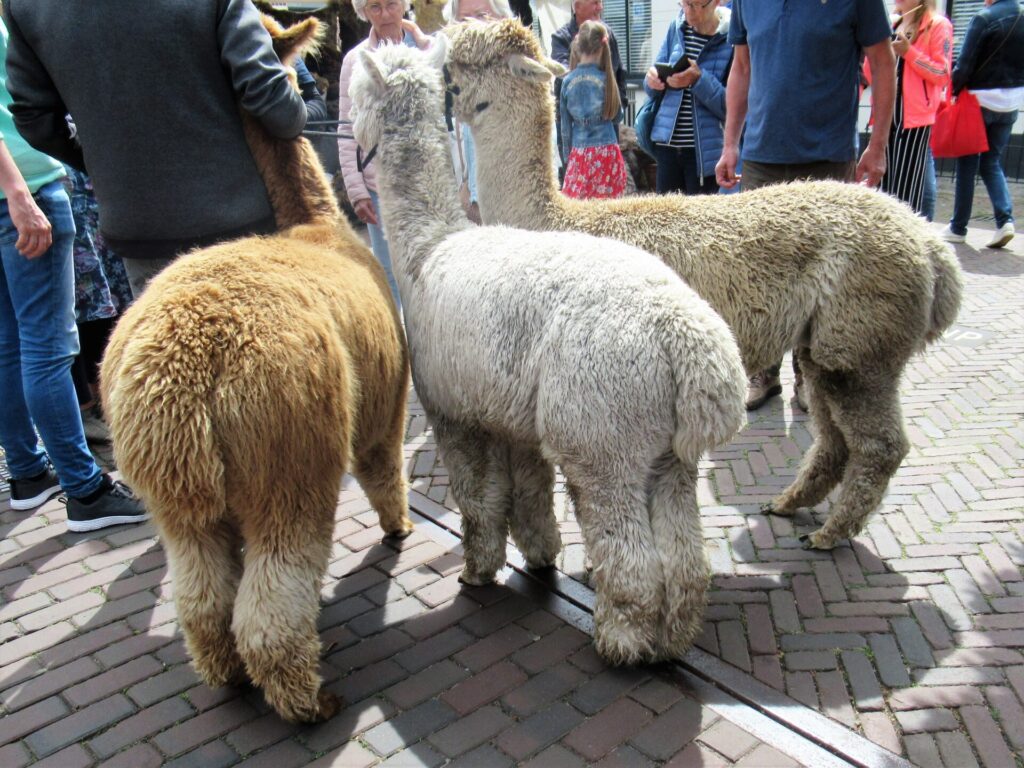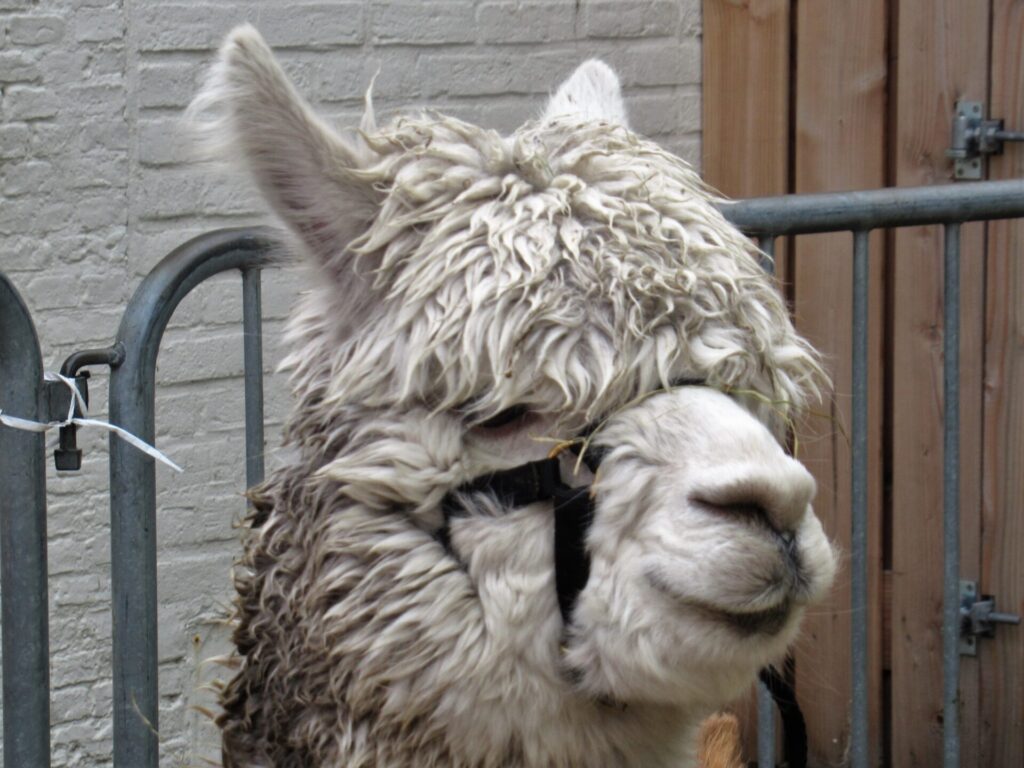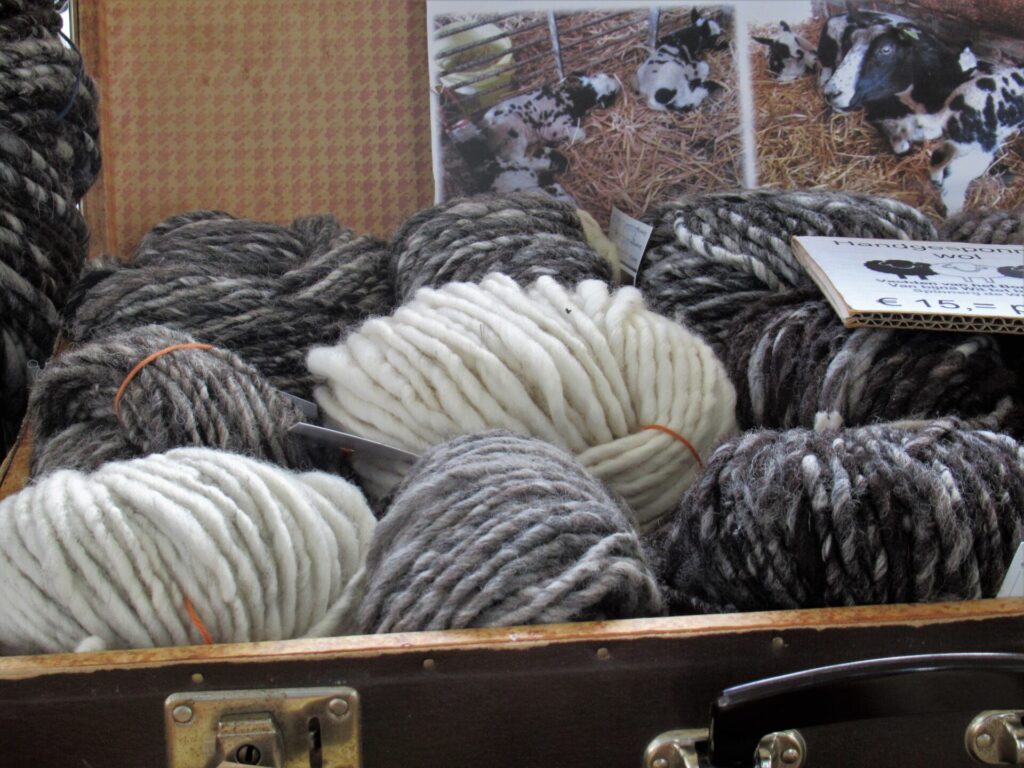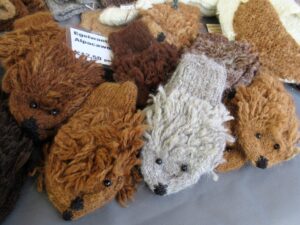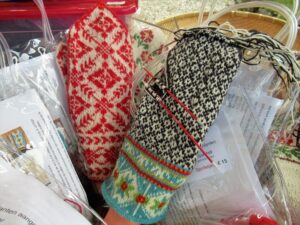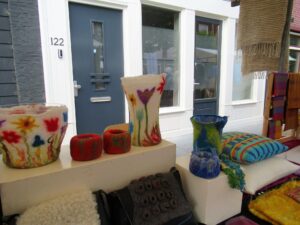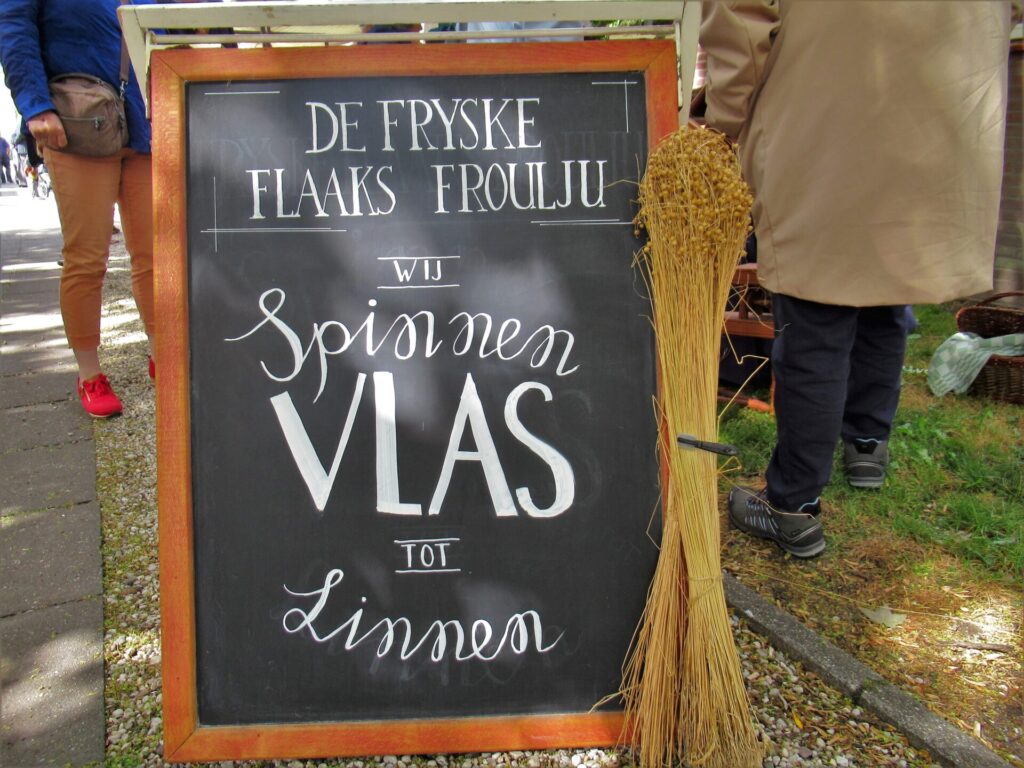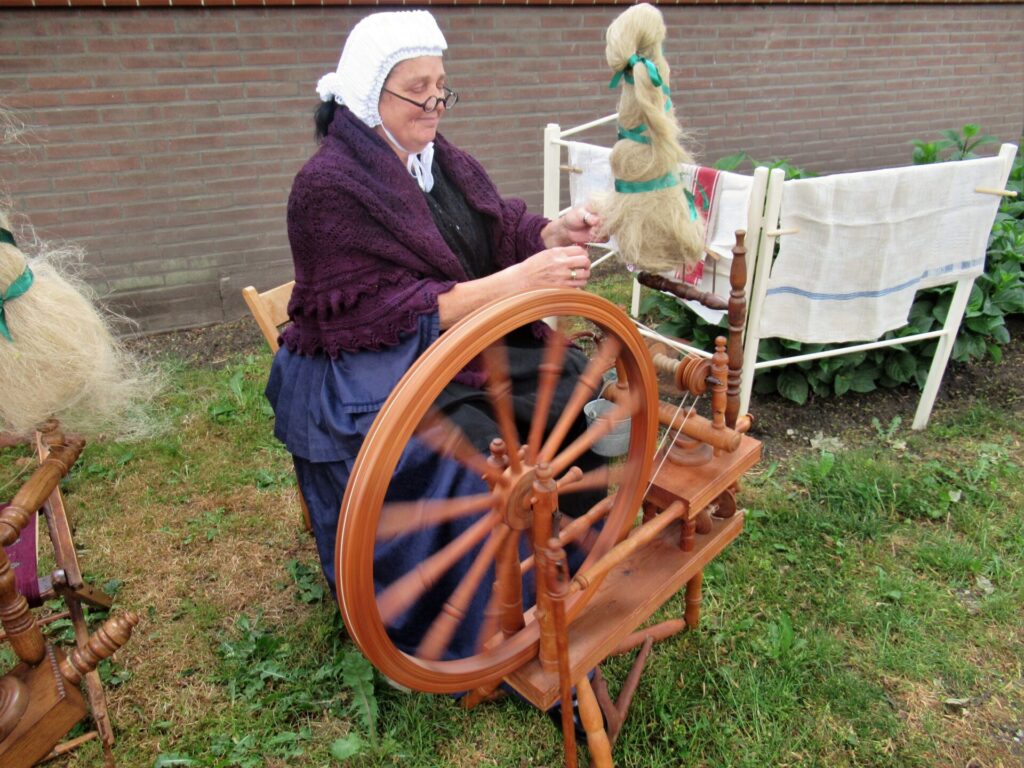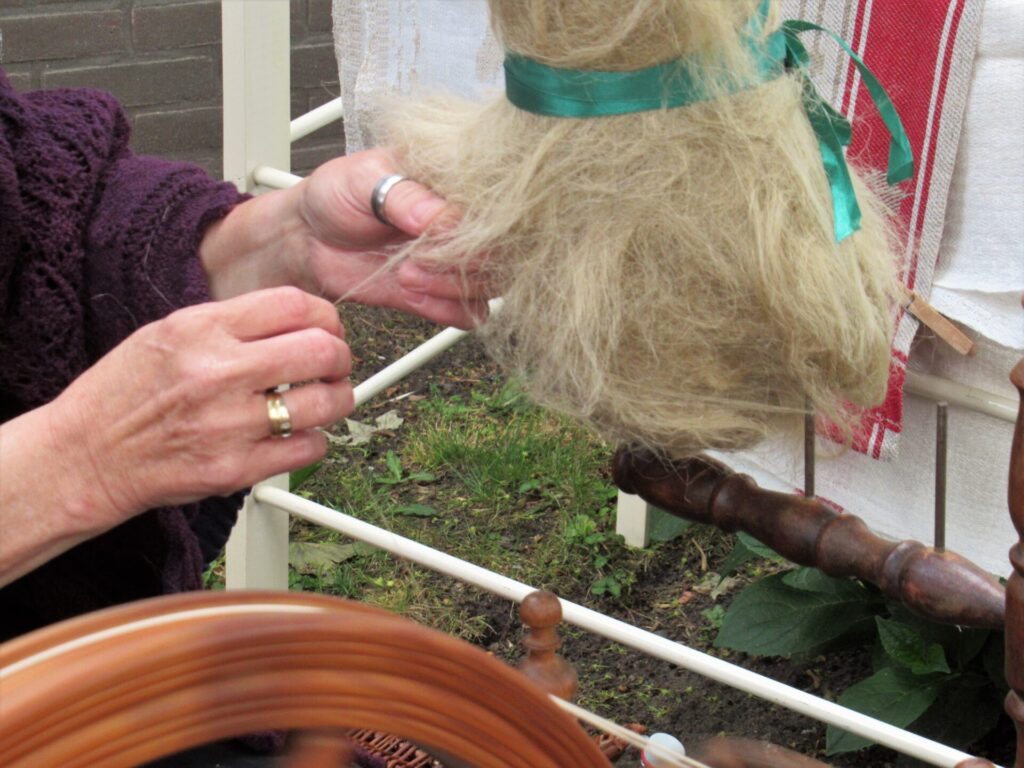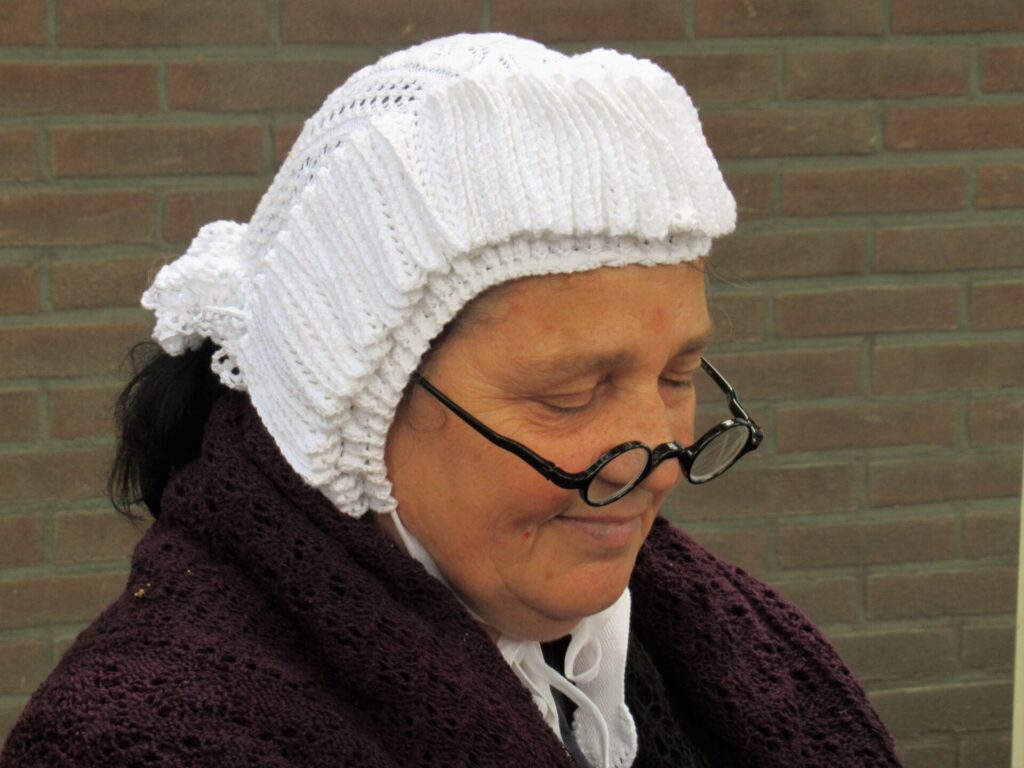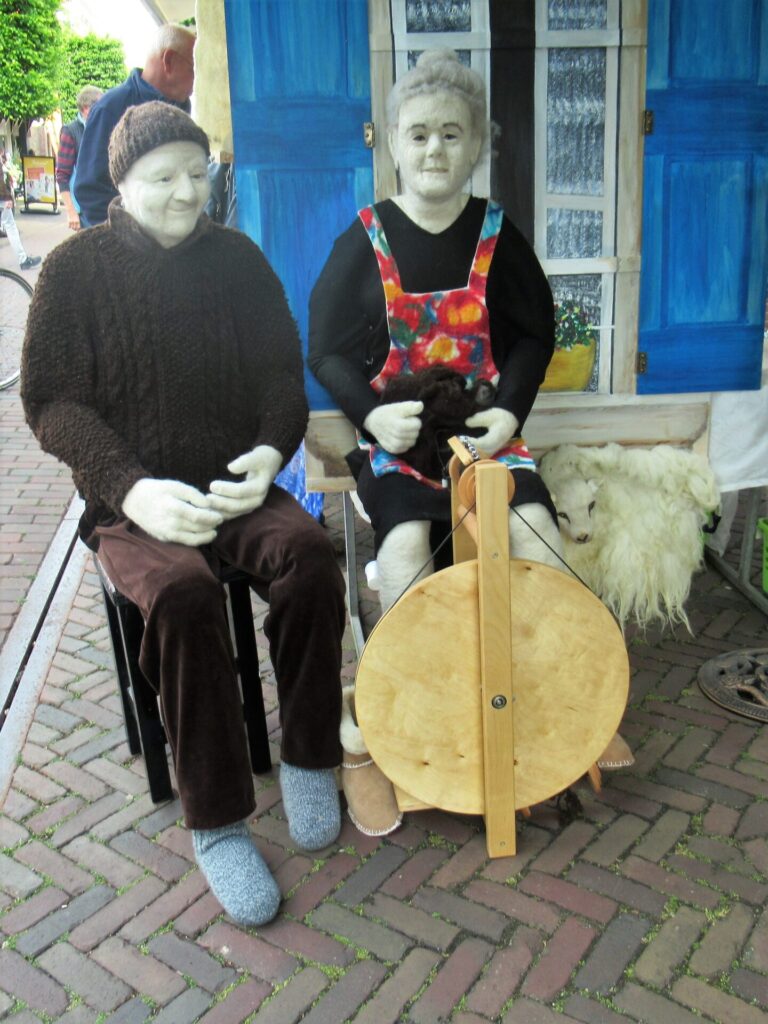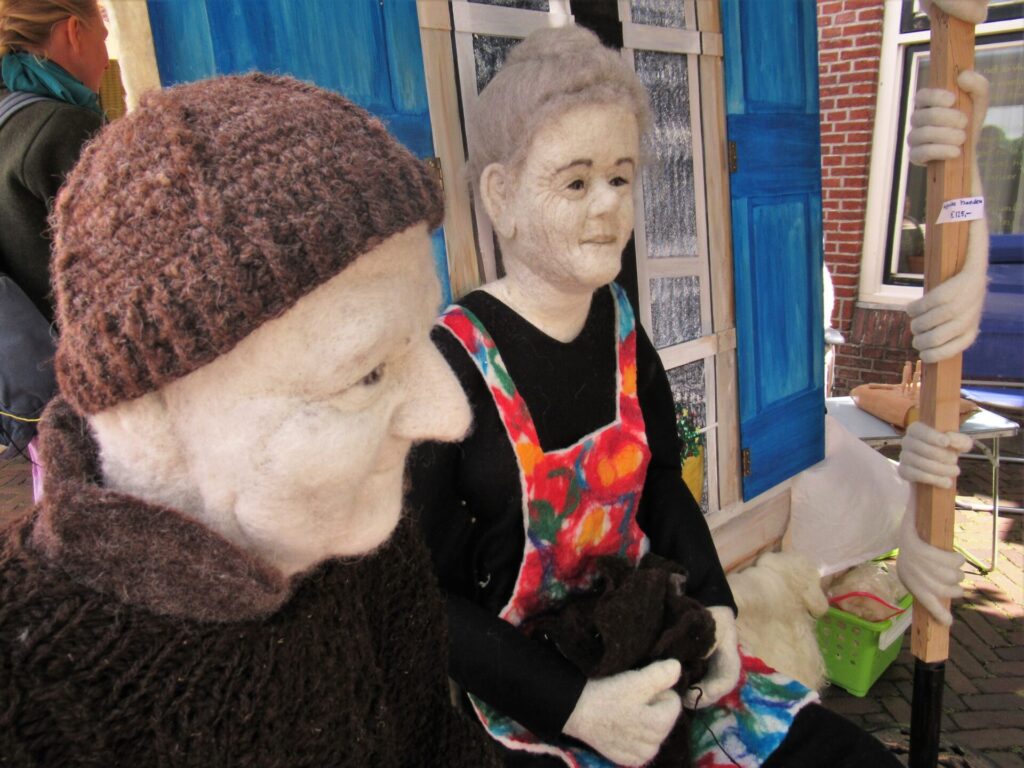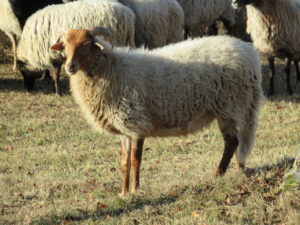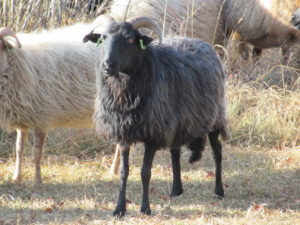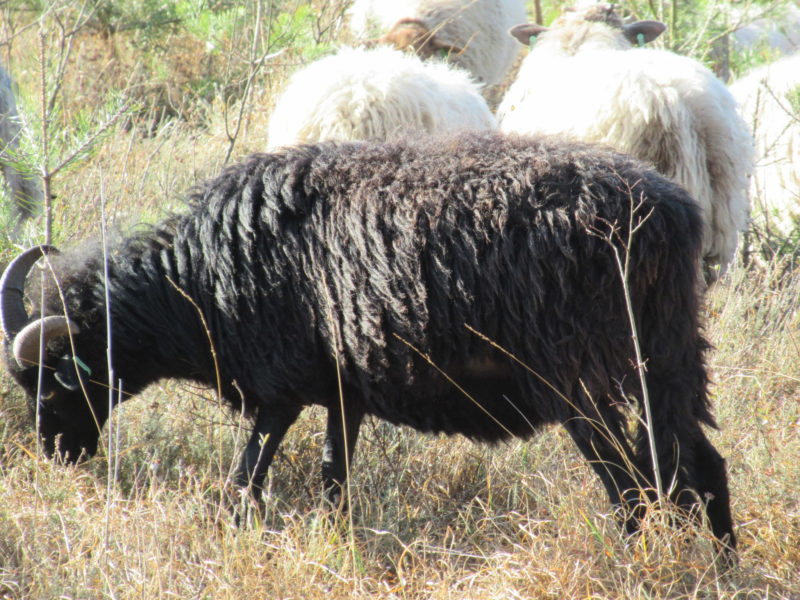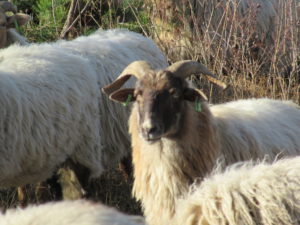Sheep Breeds
Spinning Friesian Dairy Sheep
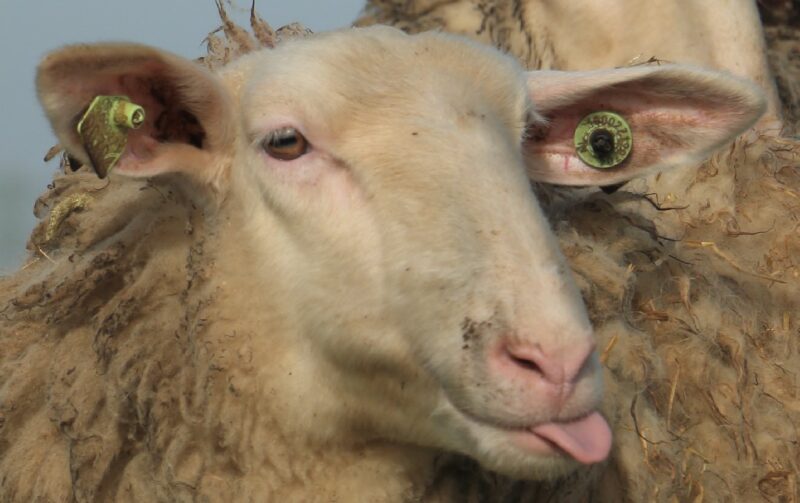
Hello!
Today’s post is all about Friesian dairy sheep. The silly creature above sticking its tongue out at you belongs to this breed. I’ve spun some of their wool that I’d like to tell you about. But there is more to these sheep than wool. In fact, their wool is only a by-product. Their main job is producing milk – they aren’t called dairy sheep for nothing.
According to the breeders’ association the Friesian dairy sheep is the sheep breed with the highest milk yield in the world (!). It produces about 600 litres of milk during the 6 month lactation period every year. It is a rare breed that was almost extinct 40 years ago, but thanks to several enthusiastic breeders their numbers have grown to around 9000 registered pedigree sheep now.
What do they look like? You’ve already seen a cheeky one in the photo at the top. Here is more serious picture.
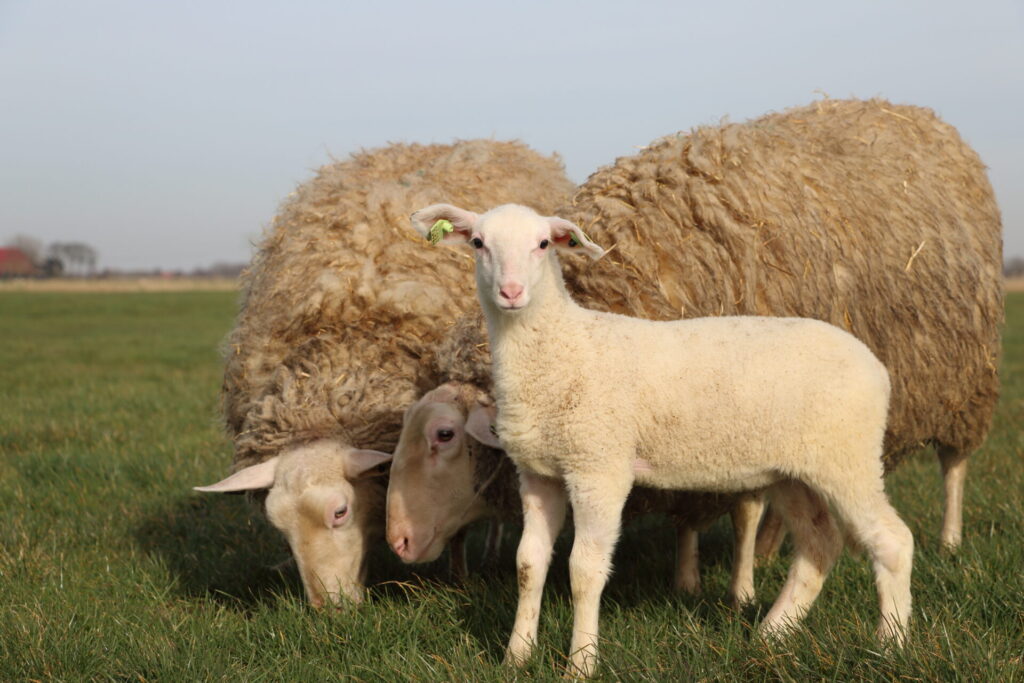
Friesian dairy sheep are large sheep without horns, with a long neck, a hairless face and tail, and a slightly bent nose.
I was kindly given permission to use these photos by sheep farm Bongastate. I’m a big fan of their smooth and creamy sheep’s yoghurt. There are lots of delicious recipes using sheep’s milk and yoghurt on their website.
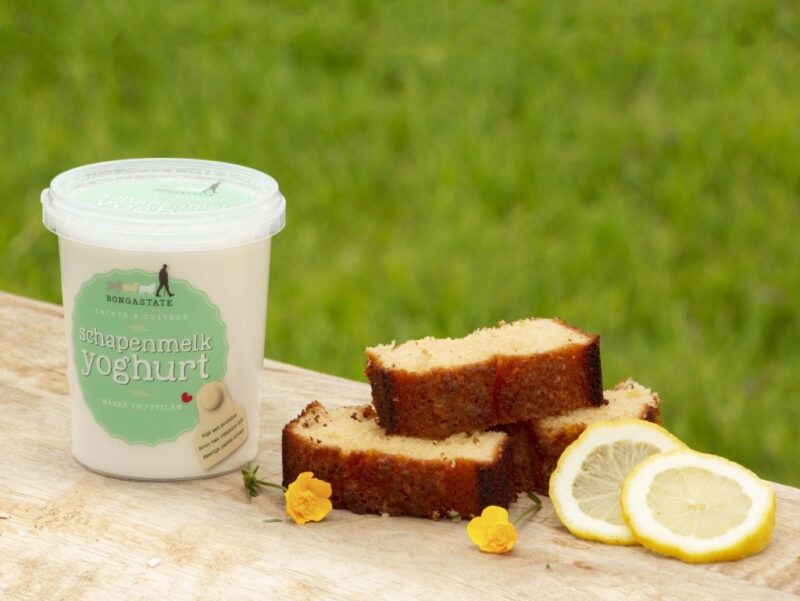
The recipes are in Dutch, but Google Translate does a remarkably good job in this case. The picture shows their lemon yoghurt sponge cake.
Sheep’s yoghurt is fairly new to me, but I grew up with sheep’s cheese. Fresh sheep’s cheese is a speciality from Friesland that is only available from about March to October. It is a small, soft, white cheese sold in plastic tubs.
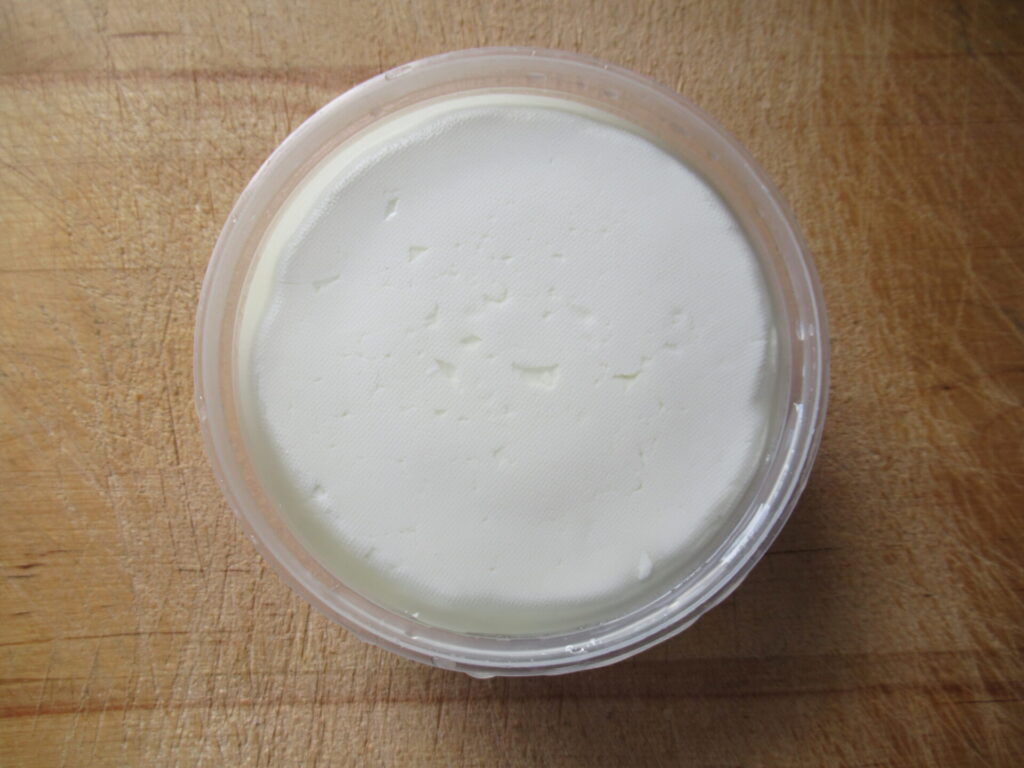
This ‘wet’ cheese comes in a bath of whey and has a very mild taste. I like eating it on a slice of wholewheat bread, sprinkled with freshly milled black pepper and sea salt.
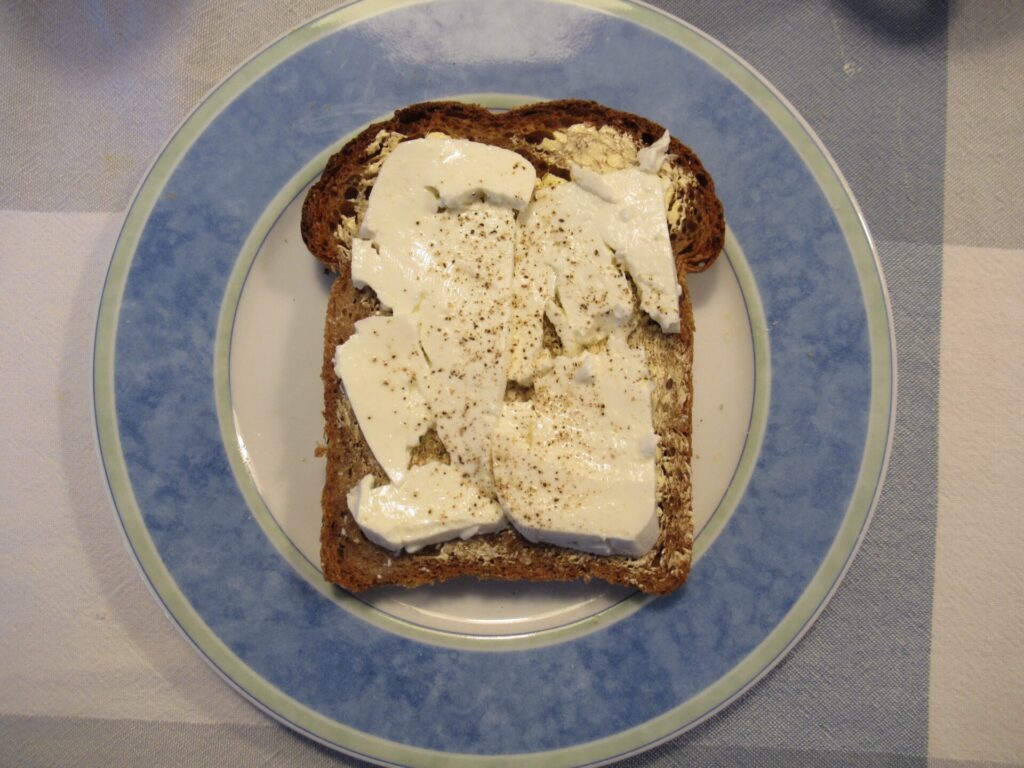
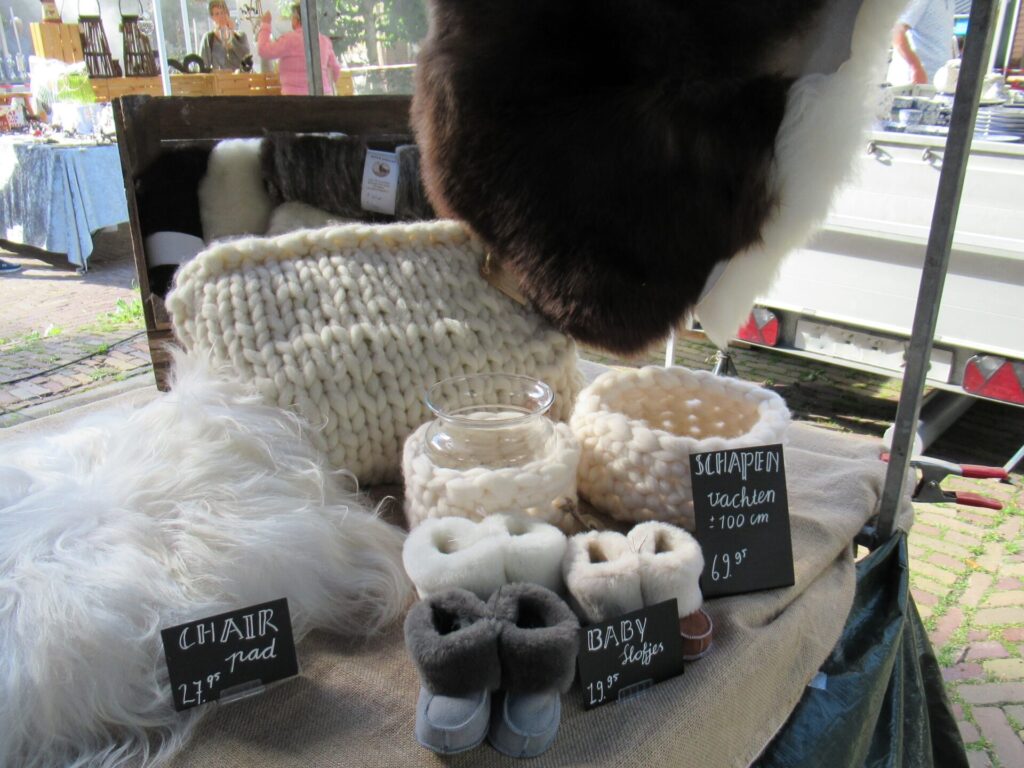
I don’t know if you can see it? Here it is from closer up, in deep brown, white and a mixture of brown and white.
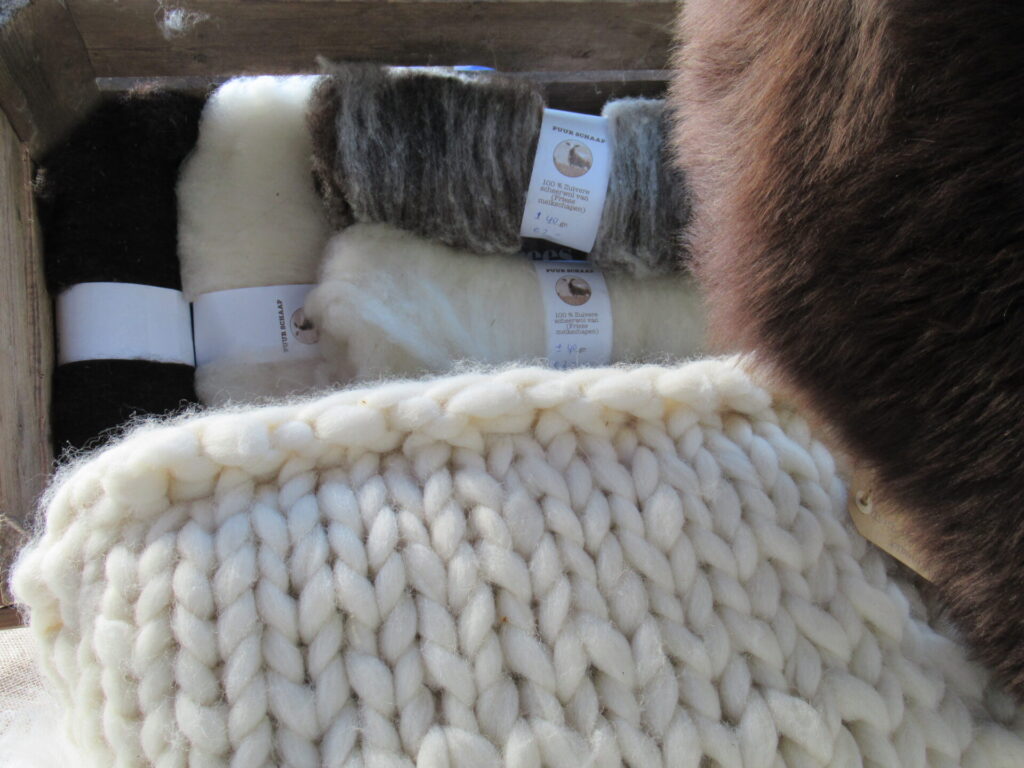
According to the sheep breeder’s association, Friesian dairy sheep are always white. How come there is also brown here? I need to ask the sellers about it if/when the market starts up again in May. I hope they’ll be there again.
Anyway, I chose white. It was sold in small quantities as rolled-up batts (carded ‘sheets’ of wool). The label said it was 30 grams.
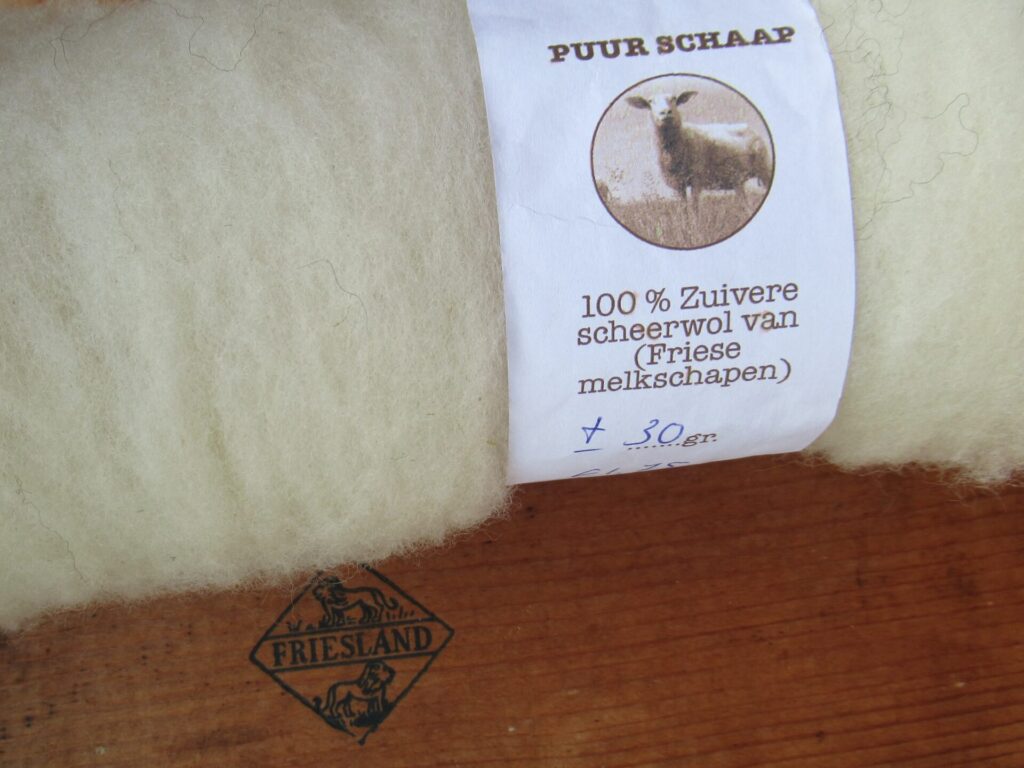
I bought both the wool and the cheese from Puur Schaap, a small and sustainable sheep farm. I’ve only met them once and don’t know much about them. For more information, please check out their website.
The wool had been cleaned and carded, but was still slightly greasy. Perfect for spinning. I rolled out the batt and divided the wool up into a sort of unofficial rolags. I tore off strips lengthwise and tore them in half widthwise.

A ‘real’ rolag is made using hand carders. All I did was roll up the pieces I’d torn off by hand.

Then I spun the wool using a short backward draft. When it was not holding the camera, my right hand guided the thread, but it was my left hand that was doing the actual drafting.
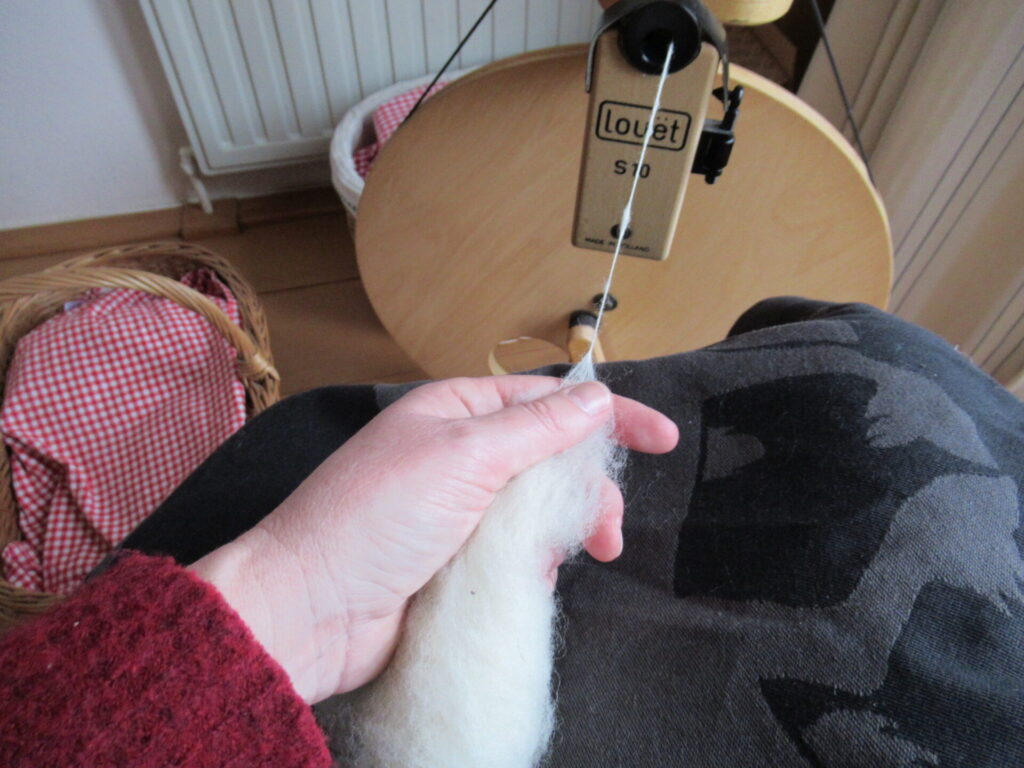
I spun all of it onto one bobbin. At this stage the wool was still yellowish and it felt like binder twine.
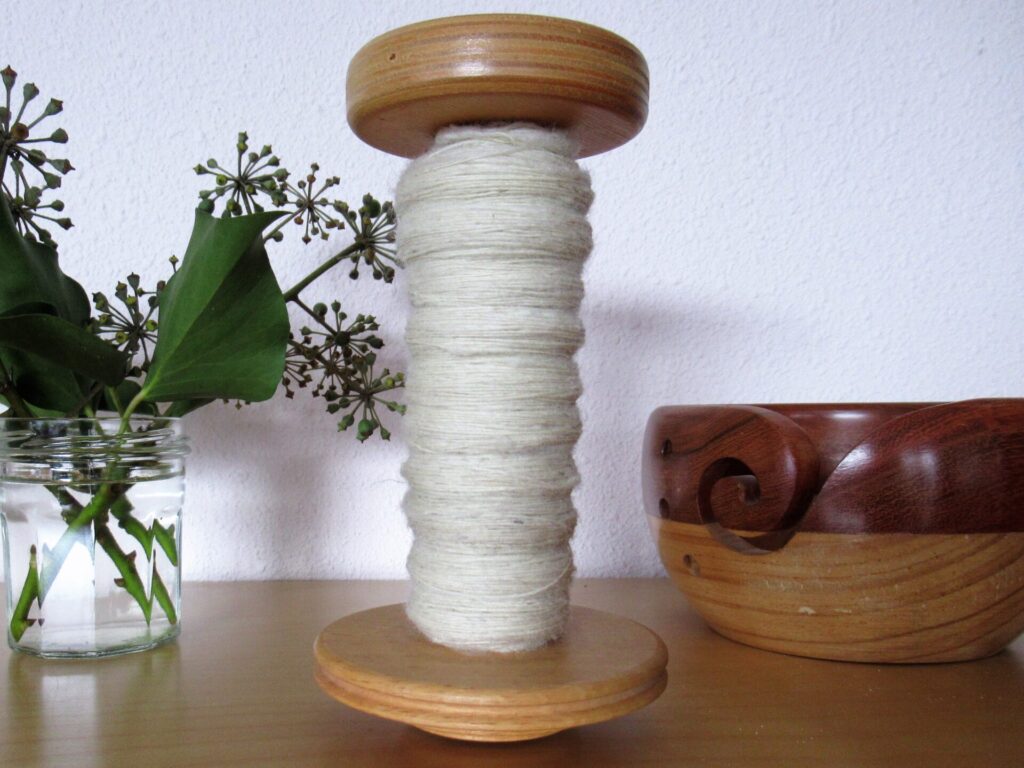
My plan was to wind it into a ball, and ply it into a 2-ply yarn from a centre-pull ball. But I changed my mind and decided to make it into a slightly thicker 3-ply yarn instead.
So I wound the wool into 3 small balls (weighing them on precision scales), put them in a basket to keep them from rolling all through the living room…
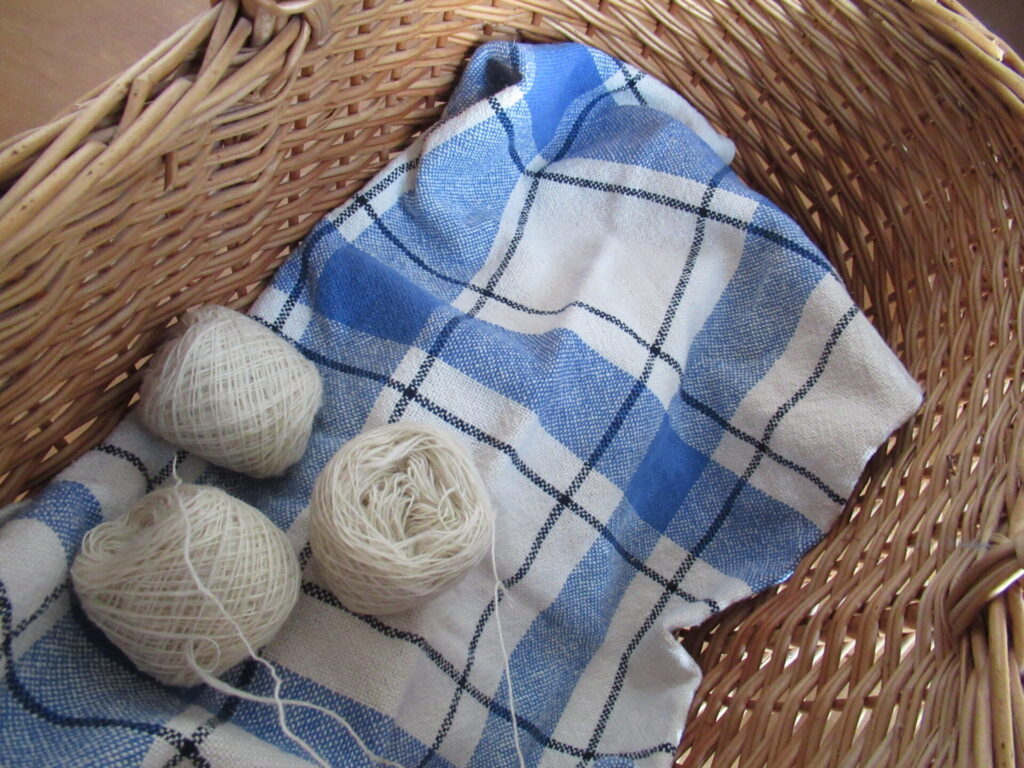
… and plied the three plies together.

Then I wound the yarn into a skein and washed it, first in washing-up liquid and then in Eucalan. The grease came out and after drying I had a skein of creamy white, perfectly clean lavender-scented yarn.
It is the softest yarn I have ever spun from local sheep’s wool. Not as soft as merino, but it spun up into a really lovely, slightly airy thread.
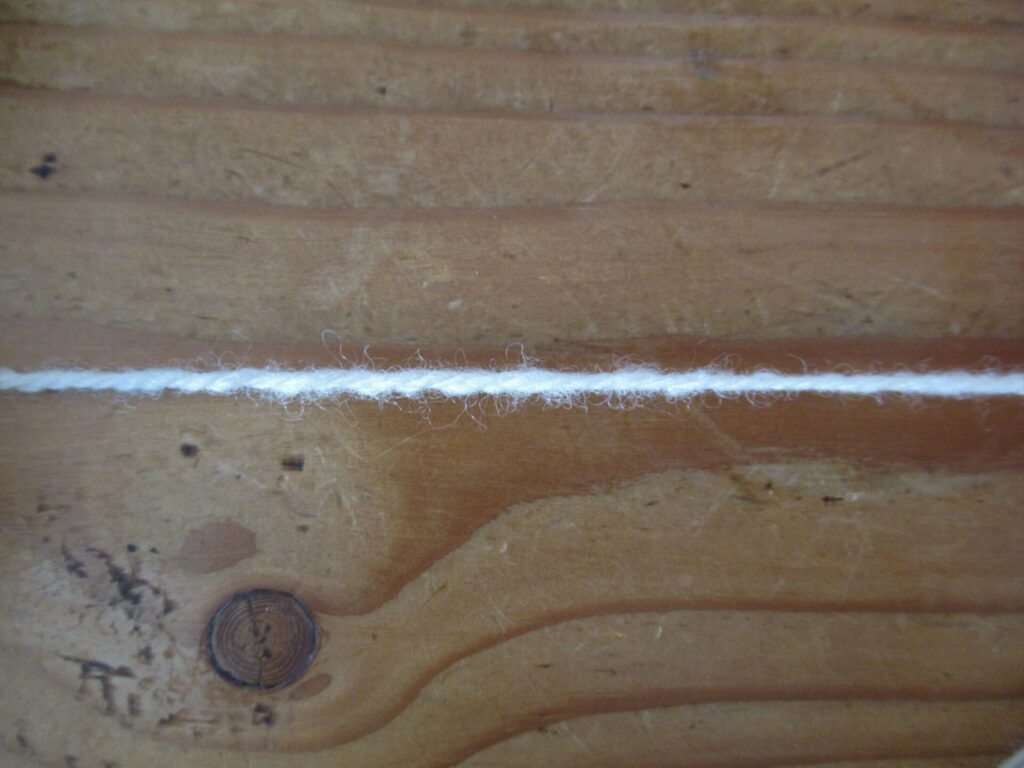
The skein weighs about 40 grams (according to the label I bought 30 grams of unspun, but they have obviously been generous) and has a length of approximately 100 metres (110 yards). I think it counts as a DK-weight yarn.
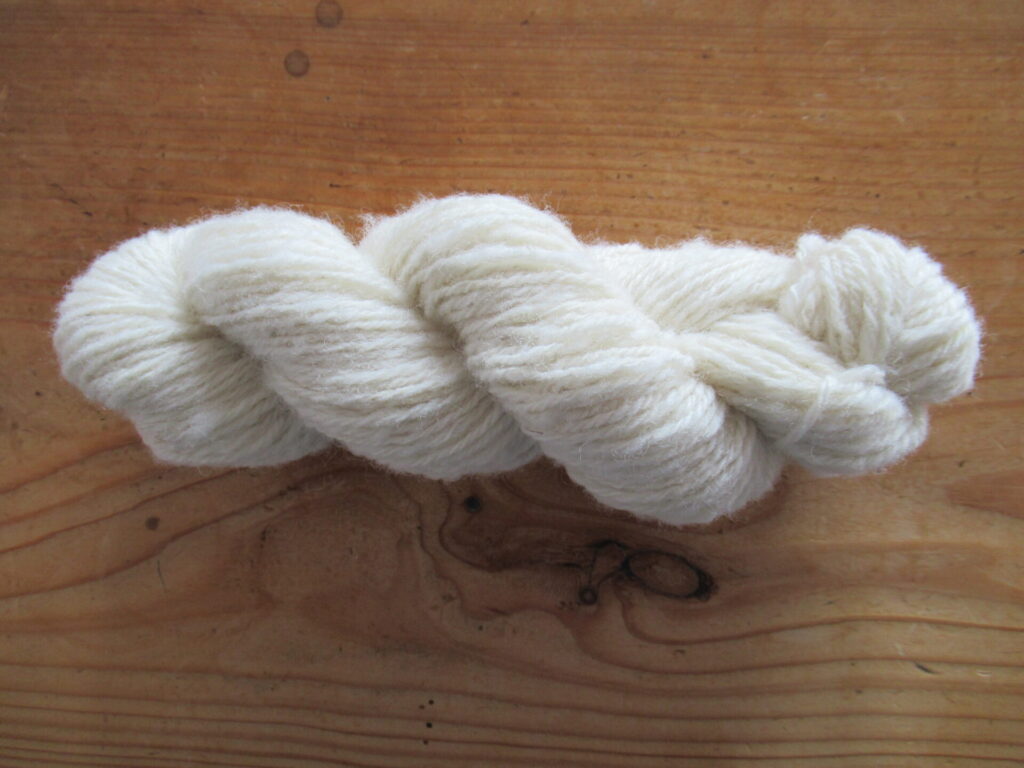
Well, that’s all about my small wool-rescuing project for now. I hope you’ve enjoyed reading about this special sheep breed. And I hope to come back to the yarn later, when I’ve decided what it’s going to be.
Something small… Perhaps a knitting notions case? Or a pair of wrist warmers? Or it may even be enough for a hat. Shall I dye it, or leave it as it is? Decisions, decisions.
Wool Rescuing
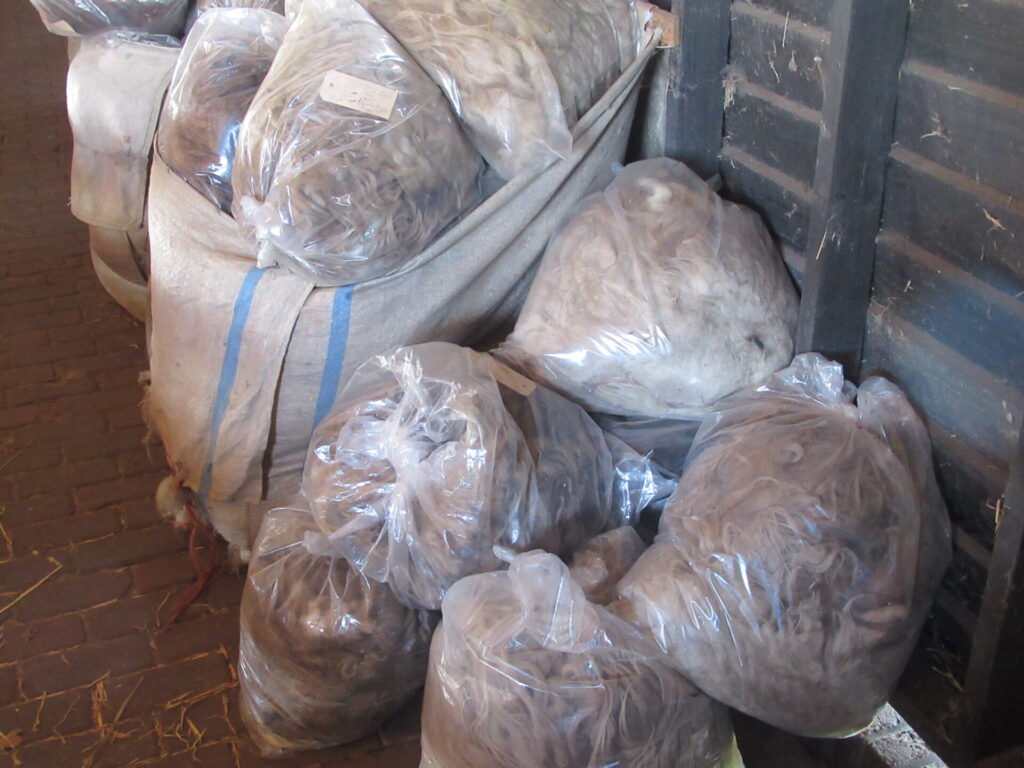
Hello!
First of all, thank you for all of your comments about the yarn colours for my fingerless mitts. You were unanimous: blue and cream for the 2-colour mitts,
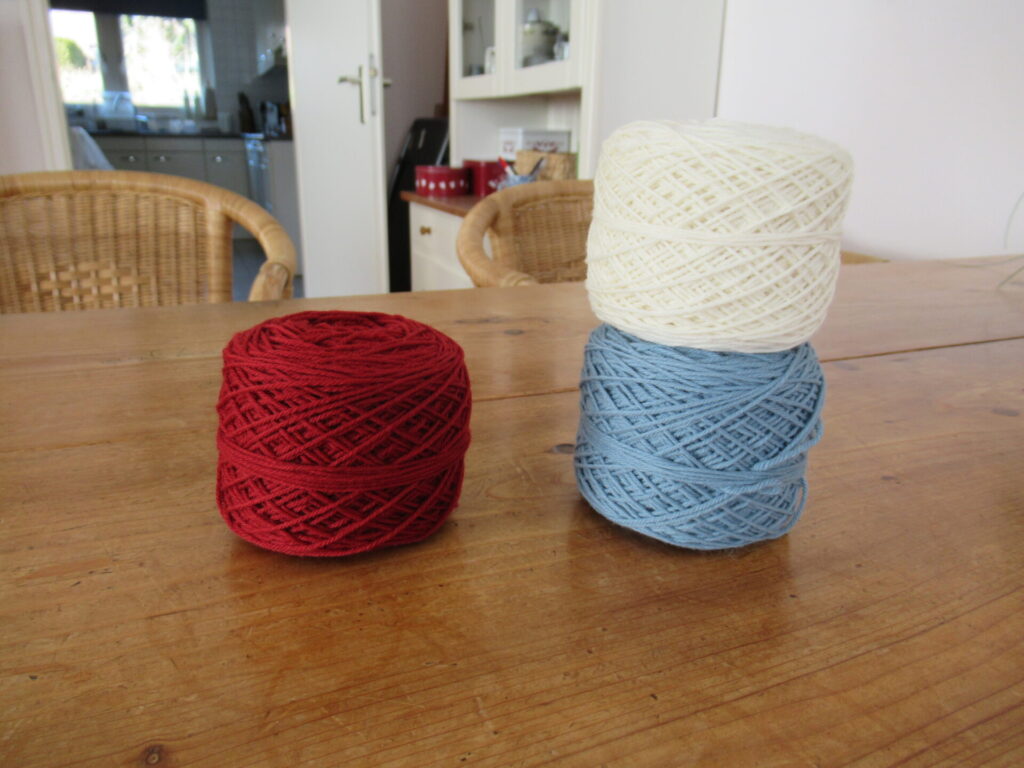
and red for the single colour version.
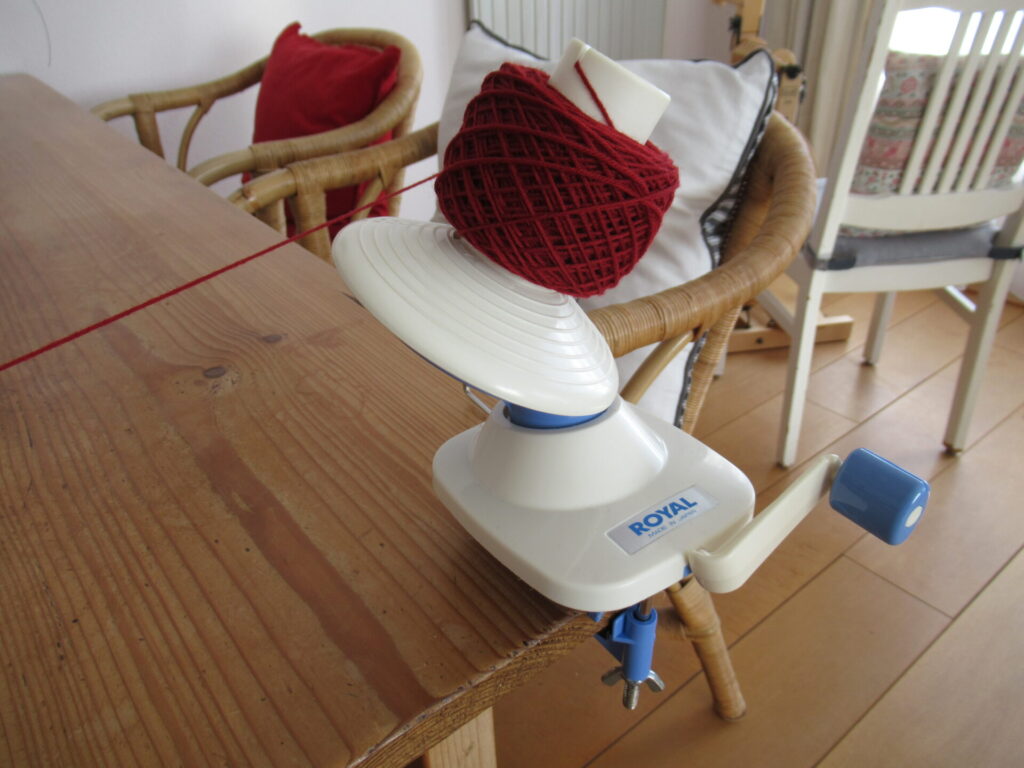
So that’s what it’s going to be. I’ve wound the yarn into balls and am looking forward to starting, but first more swatches and prototypes.
Now on to today’s subject – wool rescuing.
We have quite a few sheep in the Netherlands (at the moment about 1 million), and by far the most of them are of the Texel or Swifter breed. I photographed some of our farmer-neighbour’s Texels or Swifters (I can’t tell the two apart, to be honest) on a misty morning earlier this week.
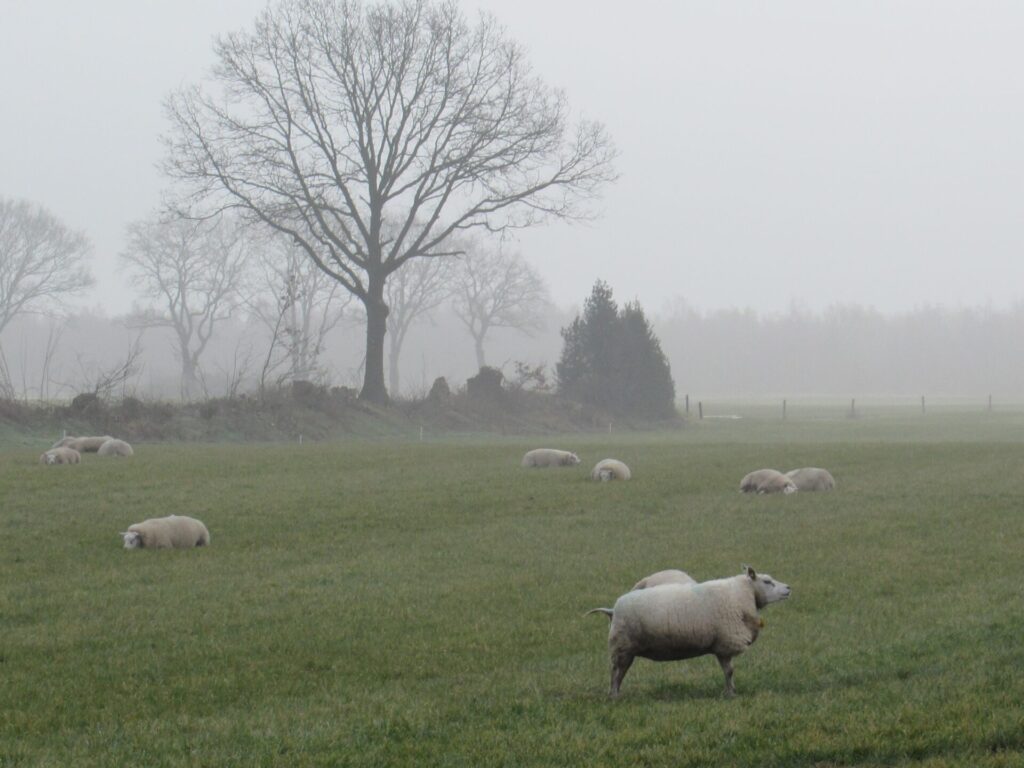
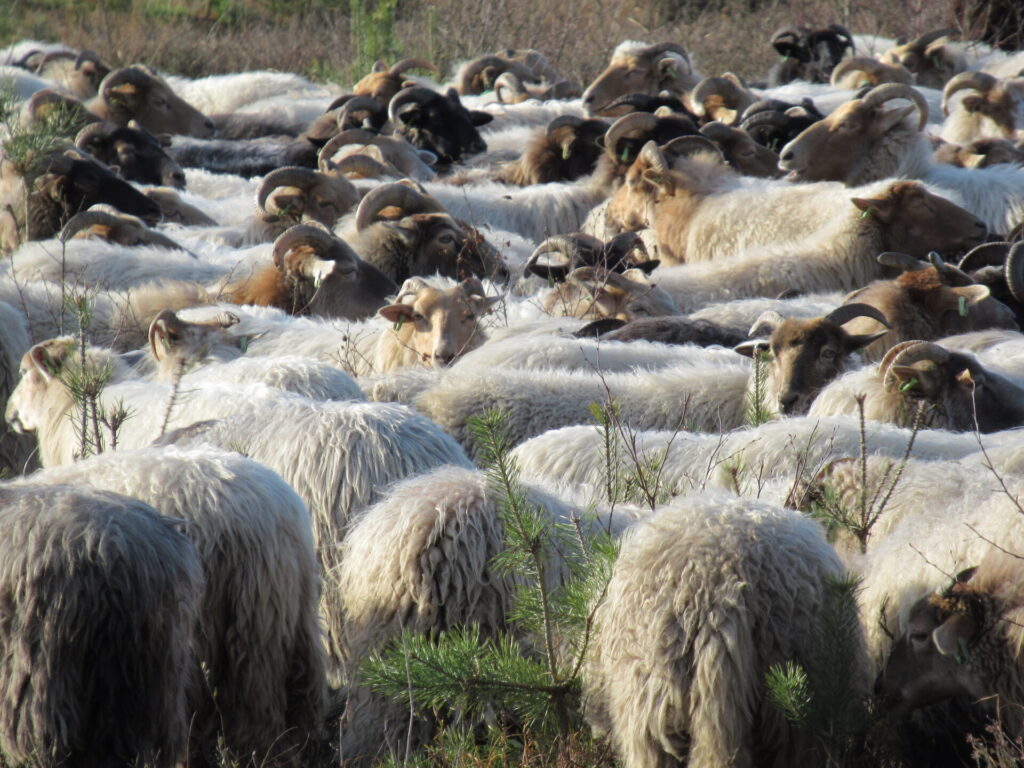
I enjoy the presence of sheep in the fields surrounding us. I love sheep’s cheese and yoghurt, and as a knitter and spinner, I am obviously also interested in their wool.
Until 1988, we had a Dutch Wool Federation – a cooperative that took care of the entire wool chain, from raw wool to end products like blankets, warm underwear and knitting yarns. They even had their own shops.
The name Nederlandse Wolfederatie still exists, but today it is an organisation that sells things like sheep shearing equipment, veterinary medicines and other things farmers may need. Seeing their buckets in our neighbour’s field evokes feelings of nostalgia for me. The logo reminds me of all the hanks of wool I transformed into pullovers, vests, cardigans and scarves as a teenager.
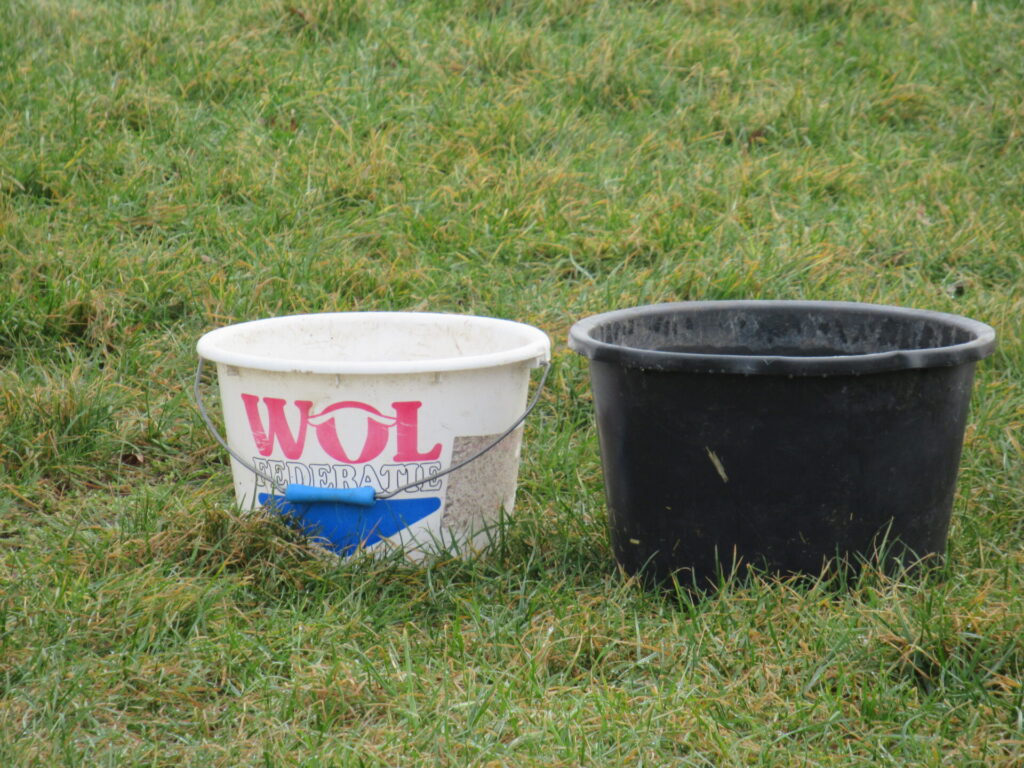
Sadly, almost all of the wool from our sheep is now considered ‘garbage’ and shipped to China, where it is used for low-grade purposes. The last spinning mill in our country closed its doors in the 1980s.
But there is good news! A group of people in Friesland have started an initiative to rescue our wool and find ways to use it locally. In 2019, they decided to adopt a flock of sheep, found people willing to spin the wool and others prepared to weave, knit and crochet blankets from them.
In spite of the Covid-restrictions, they were able to organize an exhibition of all these blankets in 2020. Hats off to them! I haven’t been able to visit the exhibition myself, but have admired the blankets on their website.
And now they have recorded their experiences in a Wool Rescue Handbook.
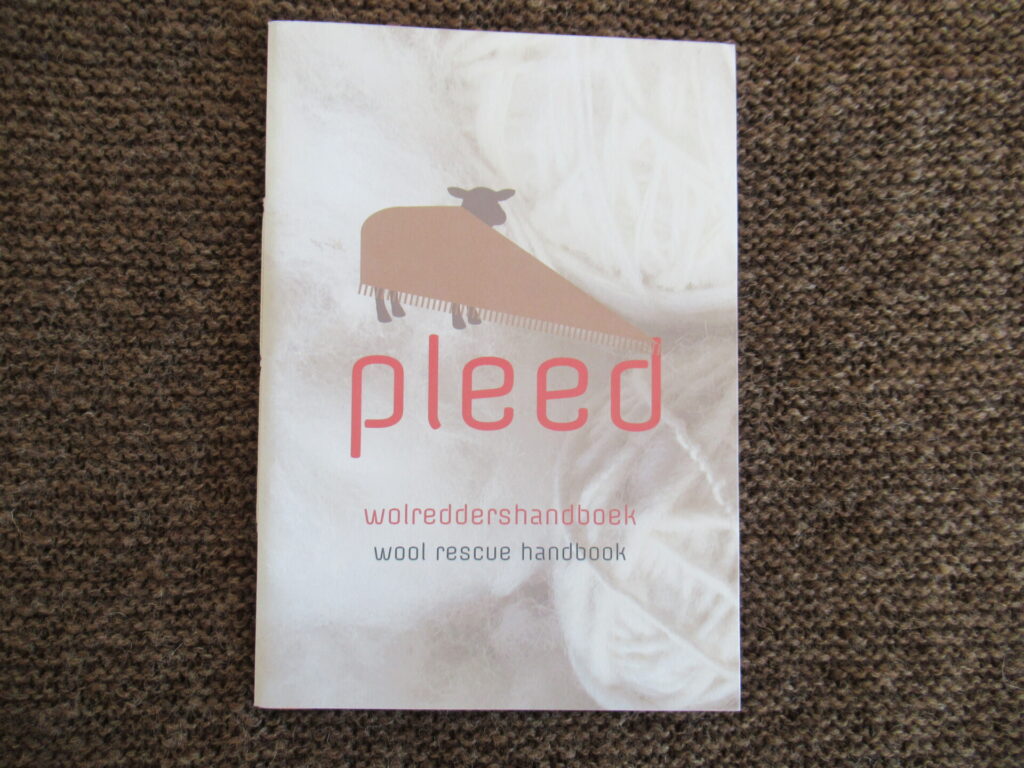
It’s a lovely 60-page booklet packed with tips and advice for anyone who would also like to rescue some (or a lot of) local wool. The text is in both Dutch and English, and is accompanied by many photographs.
With a subtle sense of humour, the booklet takes us through the entire wool-rescuing process step by step. Step one is ‘Find a sheep’. There are practical tips about washing, carding, spinning and felting. There is also a lot of information about the people side of things – finding volunteers, publicity, involving schools and so on. And they have thought about the financial side, too.
What I love about this booklet is that it is not just about how to organize things, but also about fun and enjoyment. Below you can see the pages dedicated to a very important step – ‘Enjoy’.
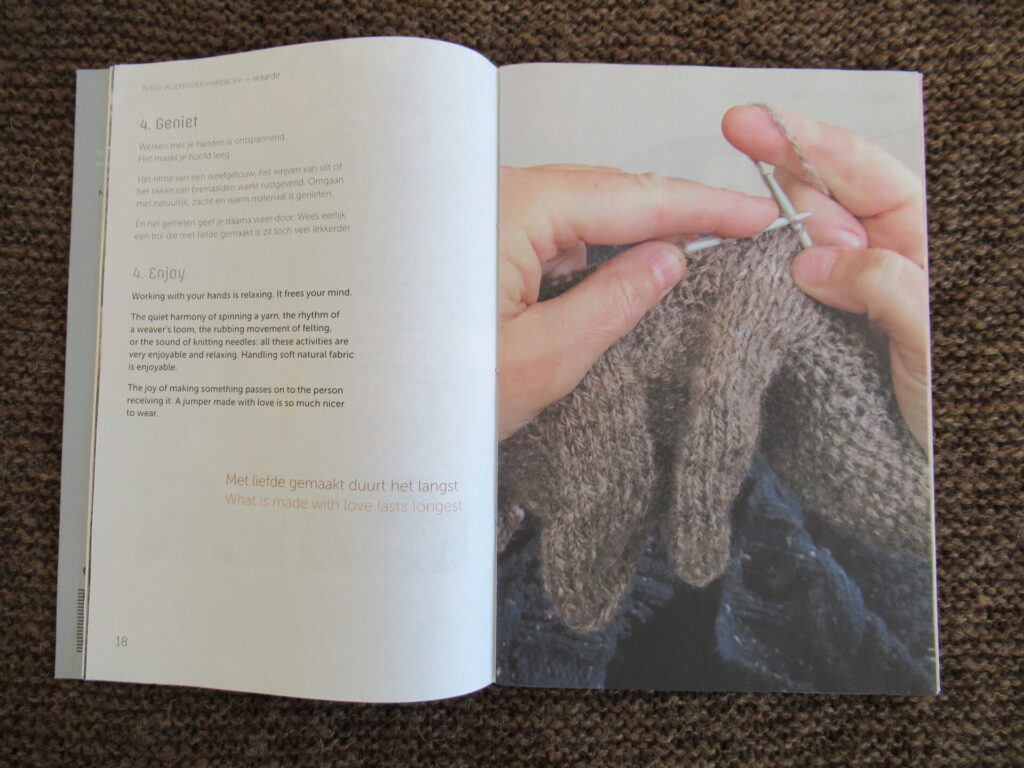
A quote from this page: ‘The joy of making something passes on to the person receiving it. A jumper made with love is so much nicer to wear.’ And another one: ‘What is made with love lasts longest.’
Apart from the actual text, everything else about the Wool Rescue Handbook also speaks of love of the entire process. The front and back flaps can be folded out and show diagrams of wool as waste versus wool as a resource. The paper for the booklet was chosen with care, the layout is done beautifully, and there are just so many interesting photos to look at.
Just look at the spread in the middle, about starting a spinning club:
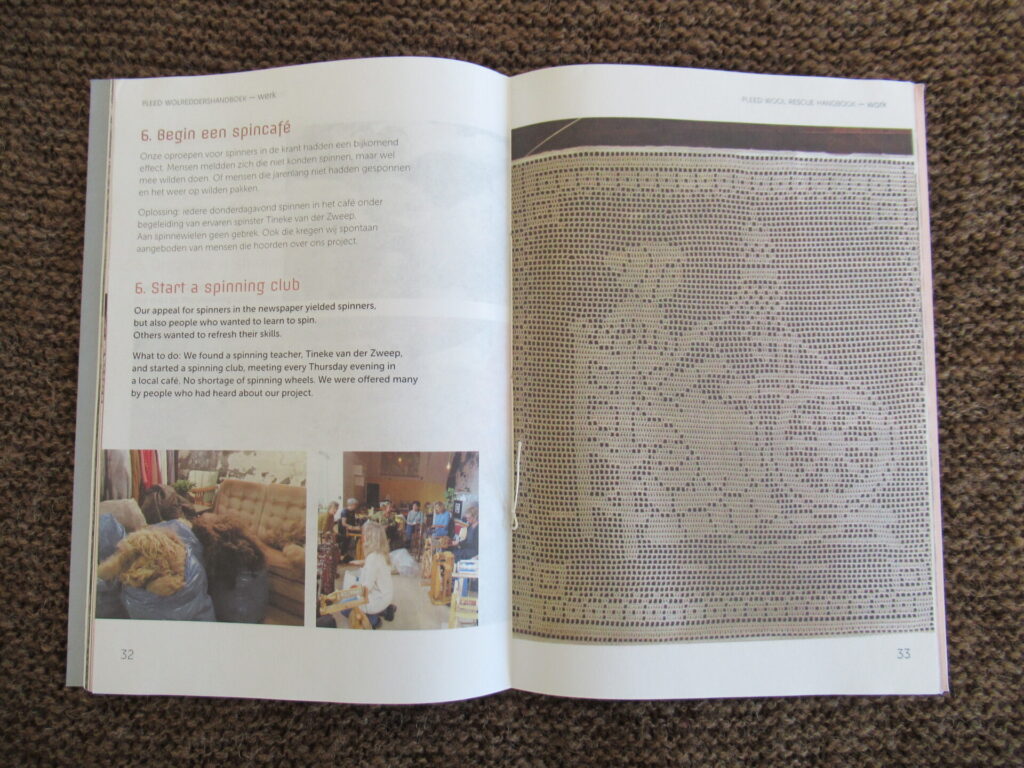
Lovely, isn’t it? The booklet has a sewn binding, and I wouldn’t be surprised if someone has spent many hours lovingly sewing every single copy by hand.
And this is just the beginning. There is now a series of baby blankets underway, and there are plans for a new spinning mill in the North of Friesland, a rug weaving studio in the Frisian capital Leeuwarden, as well as noises about similar groups in other parts of the country.
The initiative is called Pleed. (That is how the word ‘plaid’ in the meaning of throw or blanket is pronounced in Dutch.) If you’d like to know more, please visit the website (in Dutch, but with interesting photos and videos). More information about the Wool Rescue Handbook can be found here. Send them an e-mail if you’d like to order a copy.
I’m in awe of the energy and productivity of these people. I’ve never spun a blanket quantity of yarn. What I spin is a sweater quantity at most, and often even less to make a shawl or wrap.

And when it comes to wool rescuing, I’m doing that on a very modest scale, too. I’m currently spinning a tiny quantity of Friesian Dairy Sheep’s wool. More about that when it’s all spun and plied.
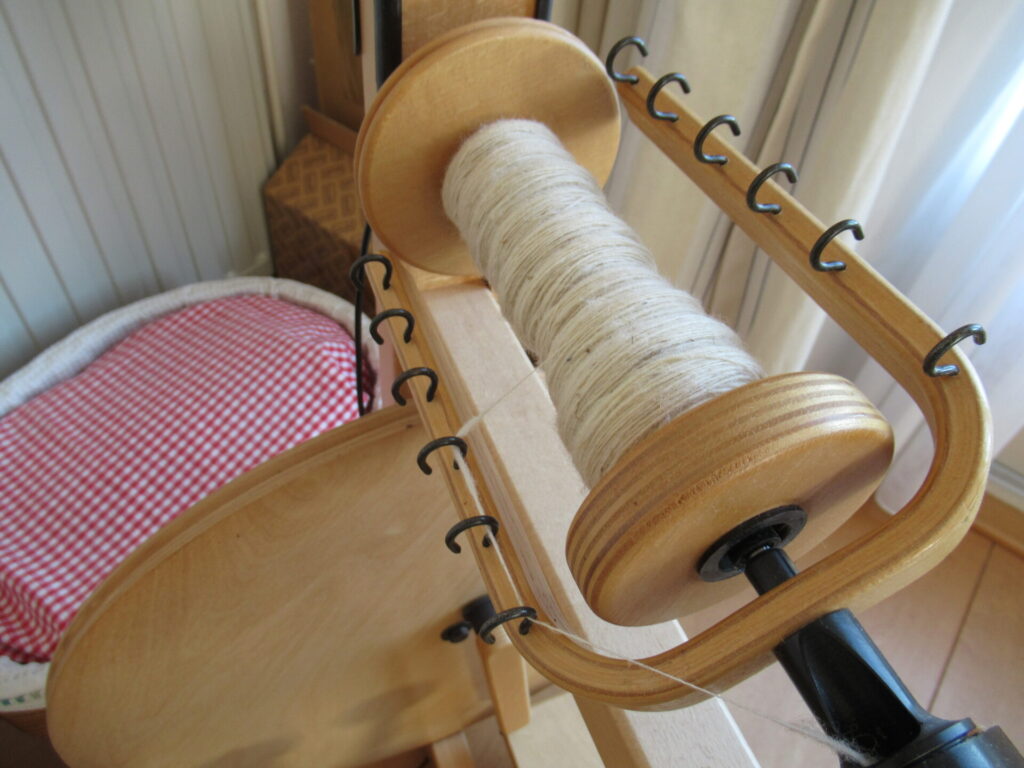
Spinning Drenthe Heath Sheep
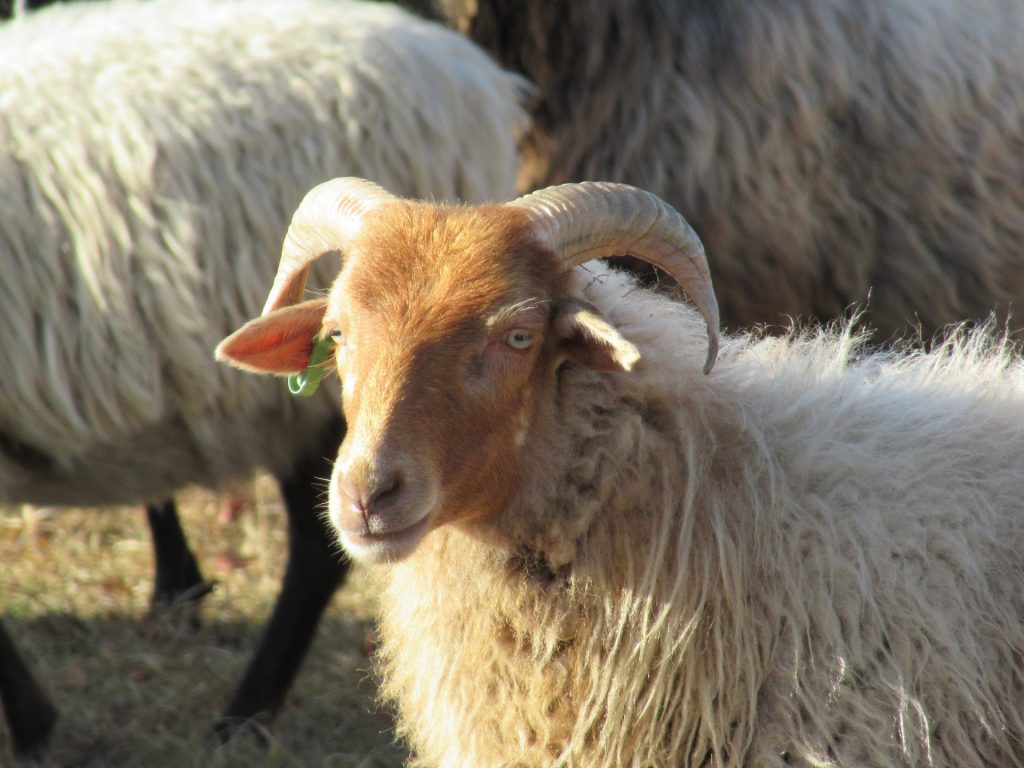
Last year, I bought a bag of Drenthe Heath sheep wool. During our walks, we often see flocks of these sheep at work in one of our national parks. They are kept for conservation grazing, and their work is eating young trees and shrubs. Without them, our open heathlands would turn into woodland in no time.
Drenthe Heath sheep are not primarily kept for their meat or fleeces, but their meat seems to be good (I’ve never tasted it) and they produce fleeces of 1 to 2 kg per sheep. I know that their wool is generally considered to be of poor quality, but still I wanted to experience for myself what it feels like, how it spins up, and what I could knit with it.
An entire fleece would be way too much for me, so I bought a bag with small quantity of prepared wool.
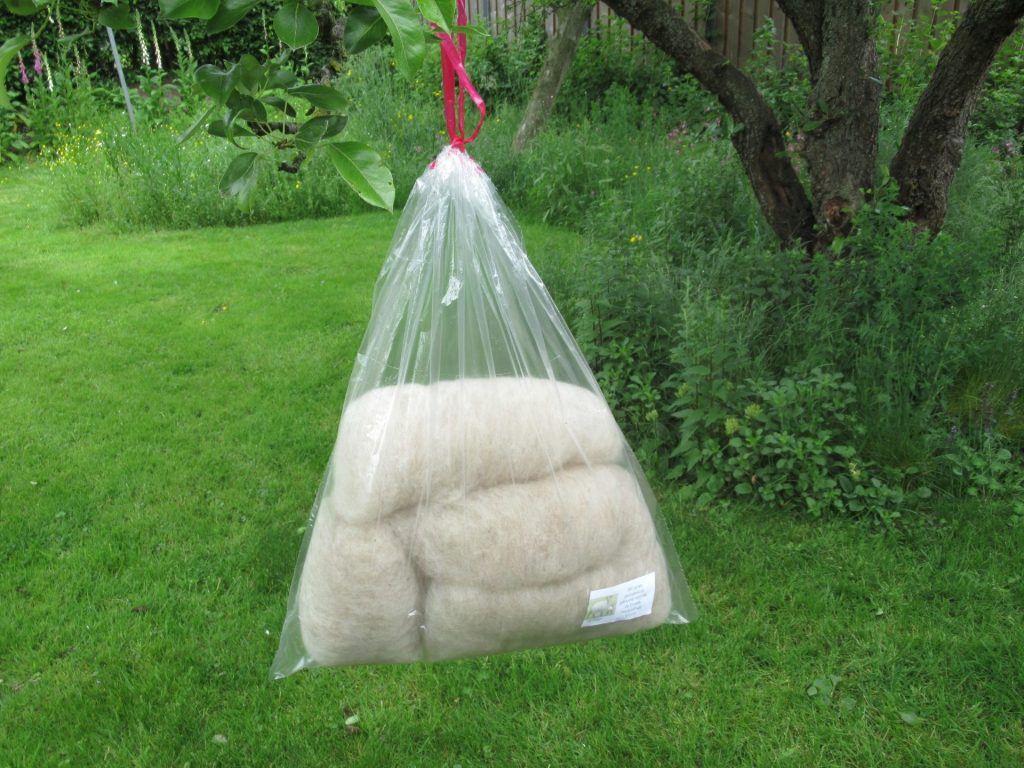
Taking the wool out of the bag, I saw that it contained five rolled-up batts, or large rolags.
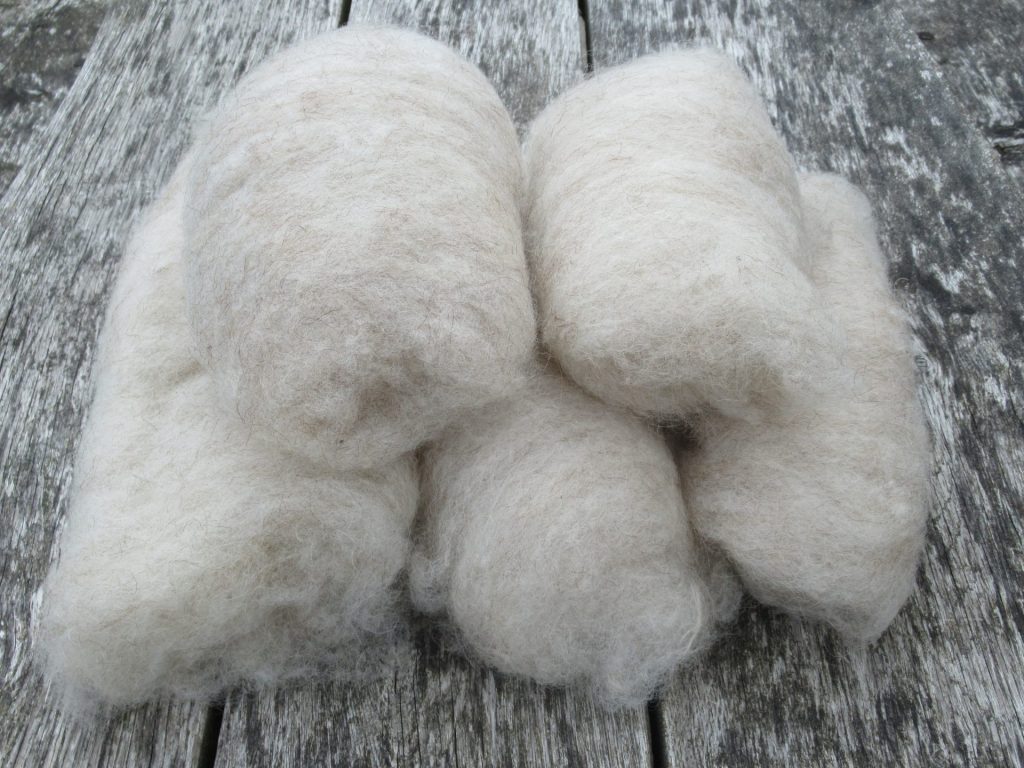
The label on the bag said, ‘150 grams. Washed and carded Drenthe Heath Sheep Wool, €10,00.’ There was also a business name on the label, but no website or contact information.
Asking around, I found out who had done all the washing and carding for me, and also that this person was going to be present at a crafts fair. Bringing a tuft of wool, I visited her stall at the fair to learn a bit more. Although she was busy selling her wares, she took the time for a chat. One of the things she said about the wool was, ‘there is quite a bit of kemp in it.’
Kemp???
‘Yes. If you look at the wool closely, you can see some dark fibres mixed in with the lighter wool. That is kemp.’
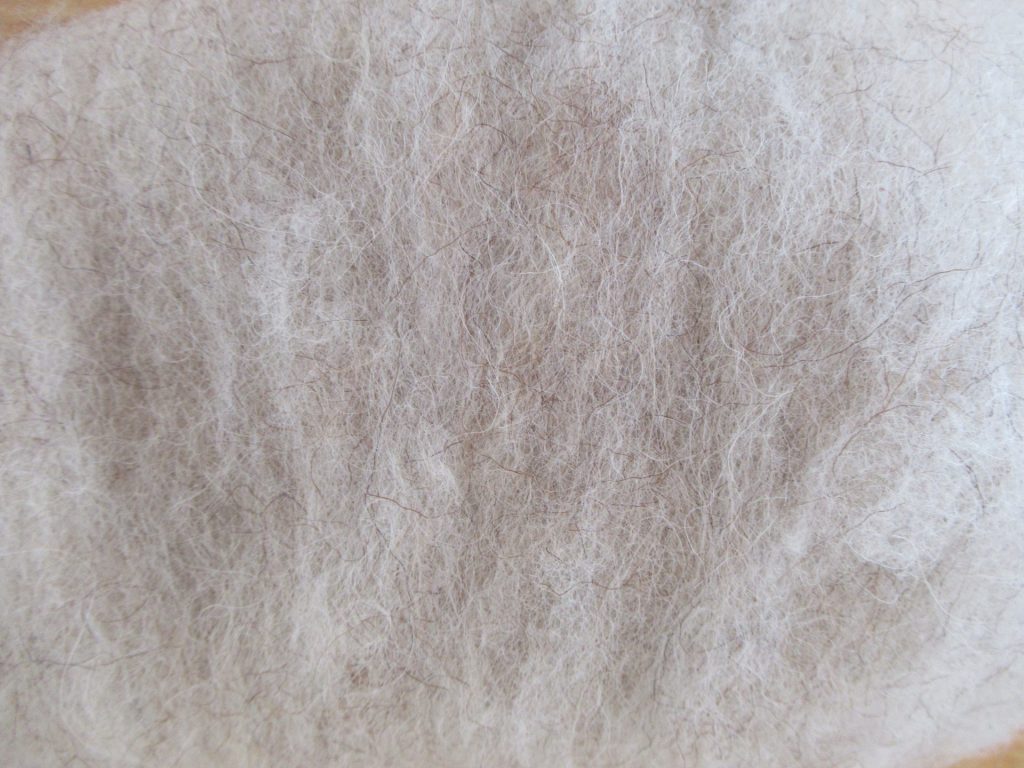
Back home I looked for more information about kemp. On p. 22 of The Spinner’s Companion Bobbie Irwin defines it as ‘Undesirable fiber found in some fleeces, especially those of more primitive breeds.’ I also found out that kemp isn’t actually wool but hair. I went on to read much, much more, including that sheep have primary and secondary follicles. It was all very interesting, but would go much too far to repeat it all here.
Summing up, all sources agree on one thing – kemp is bad news!
Only Robson and Ekarius are slightly milder in their great tome The Fleece & Fiber Sourcebook. On p. 9 they state, ‘Kemp isn’t all bad, though. Its very nature of odd dye absorption is sometimes useful, as in the production of true tweeds.’
In spite of all the bad news, I started spinning.
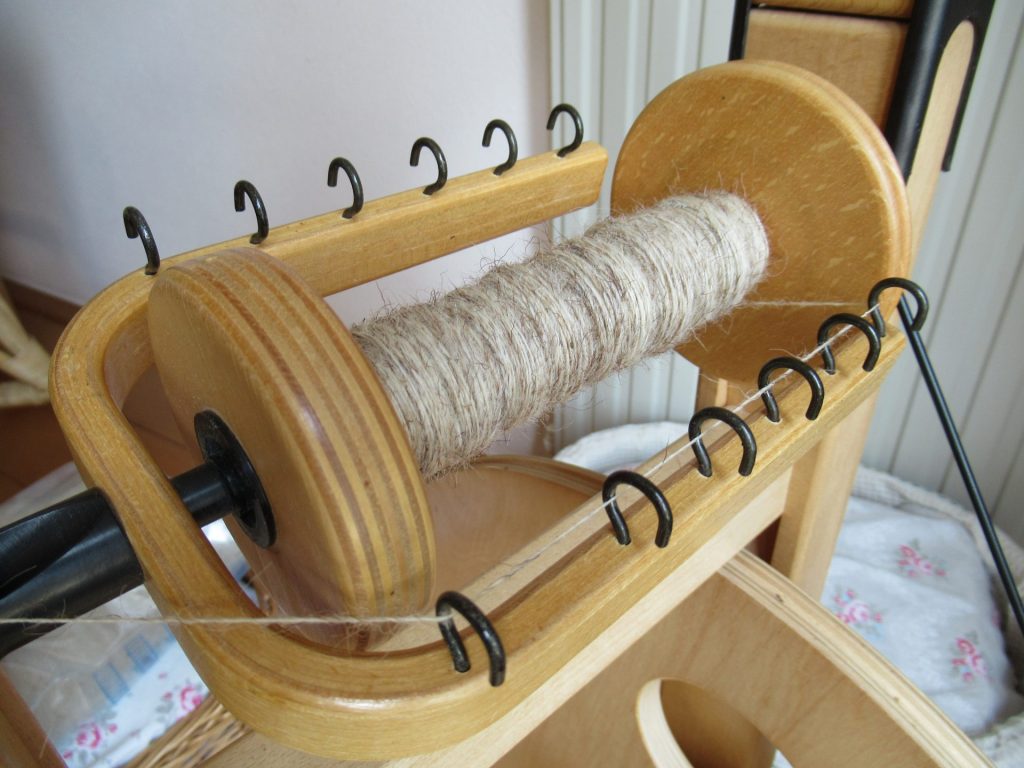
When I spin, I always have a tea towel on my lap, to protect my clothes and catch any dirt and fibres coming from the wool. For light fibres I use a dark tea towel, and for dark fibres a light one. This helps me to see what I’m doing.

I divided the wool into two equal portions and spun it into a fairly thin thread. During the spinning, the wool shed a lot of kemp. I put some on a sheet of white paper to take a closer look.

So this is kemp – short, rough, slightly curly hairs that make yarn prickly and don’t take dye well.
After spinning two bobbins full, I plied everything into a simple 2-ply yarn. While I was plying even more kemp fell out, but quite a bit stayed in too.
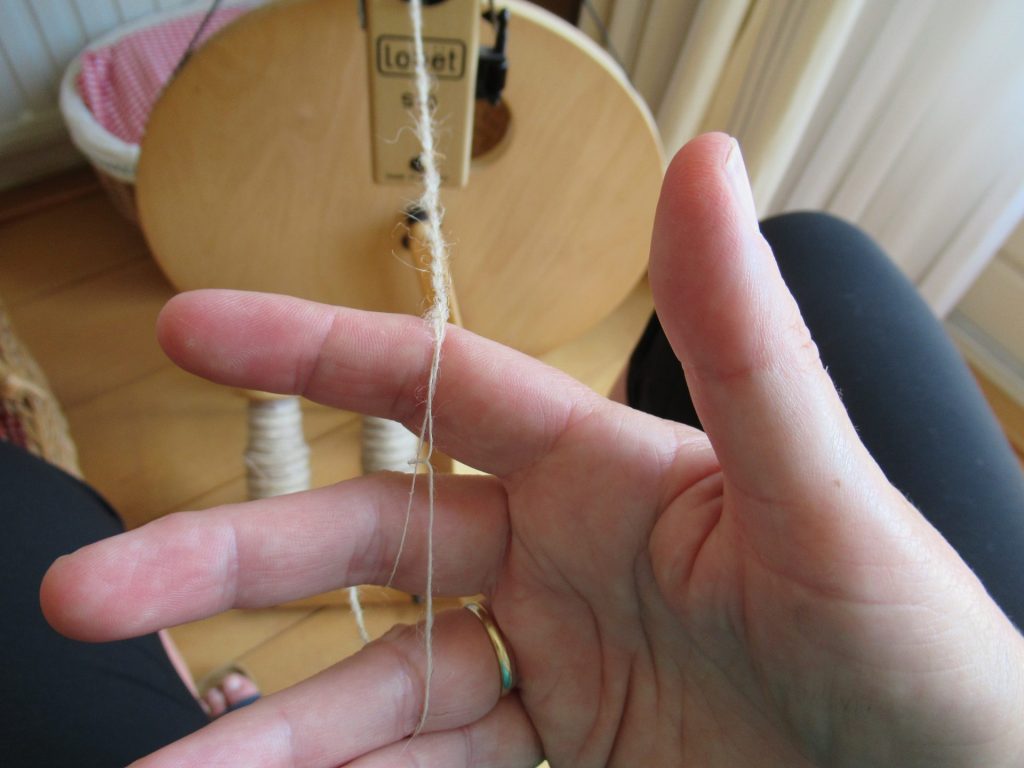
Drenthe Heath sheep can vary in colour, but their fleeces are mostly off-white. They are fairly small, hardy animals and have apparently lived in this region from about 4000 BC. My wool came from an animal like this one:
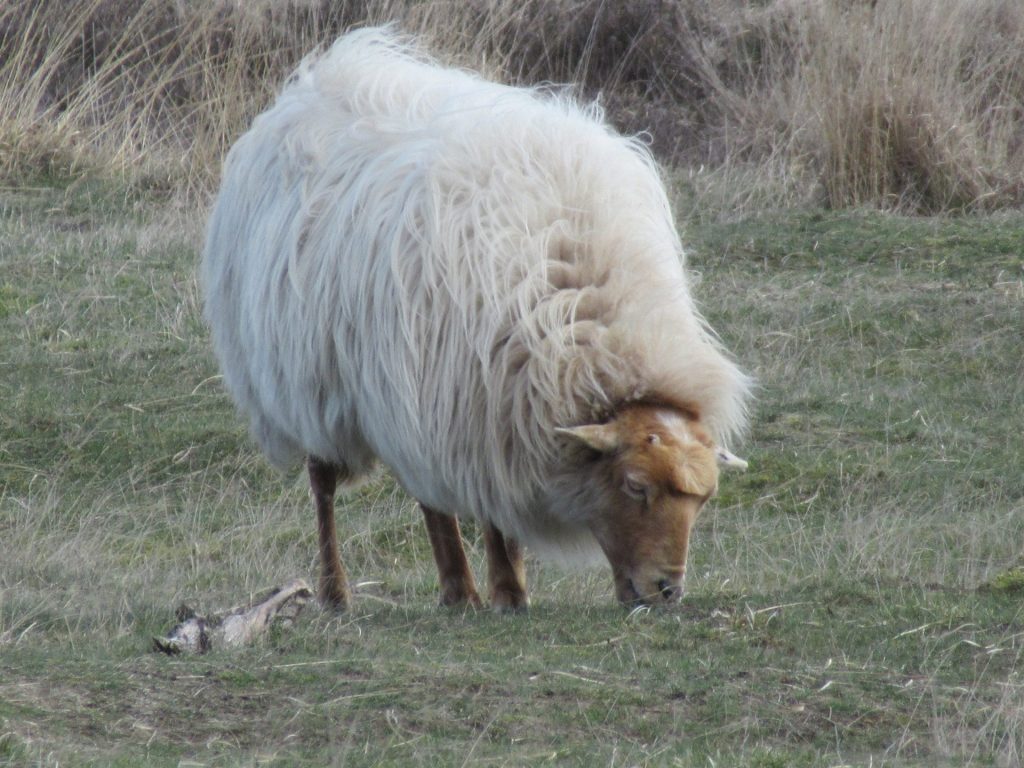
Although this isn’t the nicest wool I’ve ever spun, spinning 150 grams of Drenthe Heath Sheep wool has brought me a number of things:
- In-depth knowledge of kemp
- Several enjoyable hours of meditative treadling and drafting
- A closer connection with these animals that have lived here for thousands of years
- 135 gr/422 m/460 yds of yarn
The yarn is a sort of heathered oatmeal shade and feels, let’s say, rustic. I like it more than I expected, I have to say, but I don’t think I’d use it for something to wear.
I am also left with several question marks:
- Would it have been possible to remove the kemp entirely? How?
- If so, would the yarn still be scratchy?
- Would it have been better if I’d spun it into a thicker, loftier yarn?
- And last but not least – what could I knit with it? Hmmmmm…

If you’d like to read more about Drenthe Heath sheep, I’ve written about them here and here. And there is more information on the website of the Drenthe Heath sheep breeders’ association (mainly in Dutch, but with an English summary).
Sheep Shearing
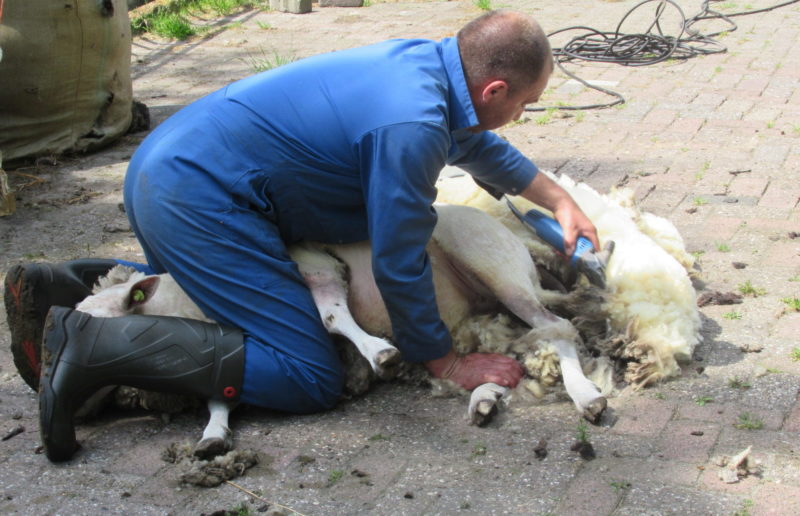
There’s been a lot of sheep shearing going on around here during the past couple of months. Often it’s just a solitary farmer shearing his own sheep in his own farm yard. The farmer above is shearing one of his Texel sheep. He keeps them for meat, like all of our local farmers. The wool is just a by-product, shorn off quickly with electric clippers, stuffed into bags and shipped off to China.
But we also have sheep shearing festivals, where wool plays a much more prominent role. I’ve been to two of these, and here’s a compilation of what I’ve seen.
Below you see the Holtinger Schaapskudde, 630 sheep kept together by one of the sheep dogs.

These Drenthe Heath sheep are kept for landscape management, grazing on saplings and keeping the heathland open. I’ve written about this herd and their ‘job’ before in this post.
As you can see, most of them have already lost their warm, white, brown, grey or black winter coats.
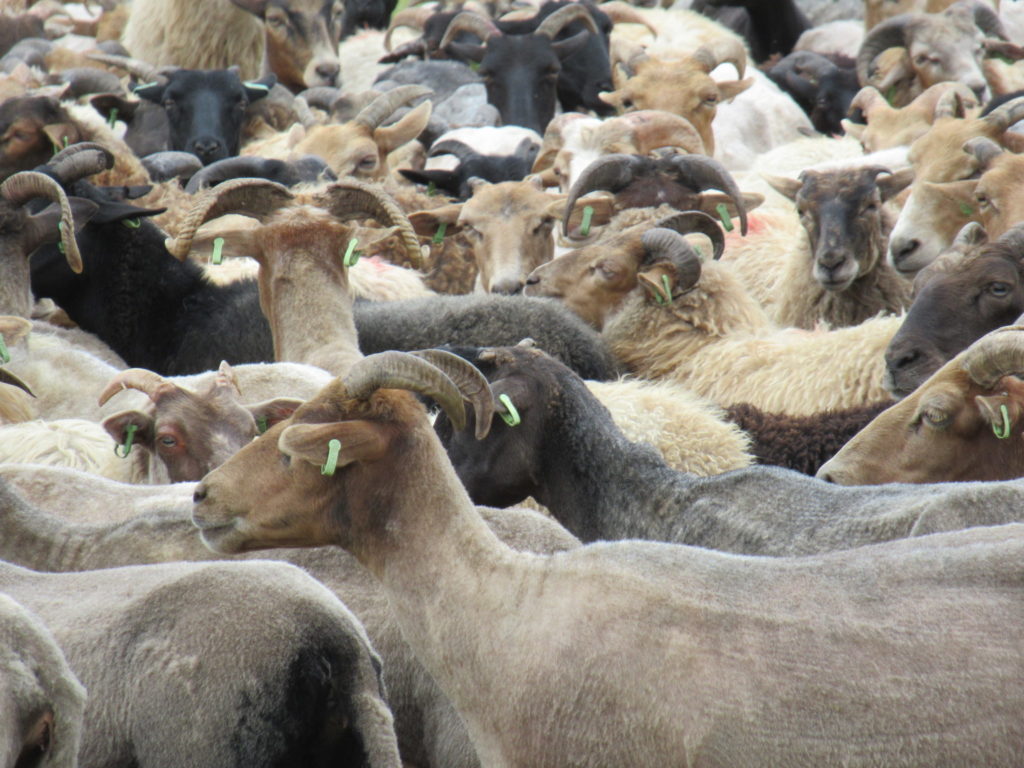
A small group of sheep has been herded into a pen. Now it’s their turn to be shorn. Visitors to the festival can point out which fleeces they want.
The wool is especially suitable for felting, and some visitors will be coming back to take part in one of the felting workshops given on the premises.
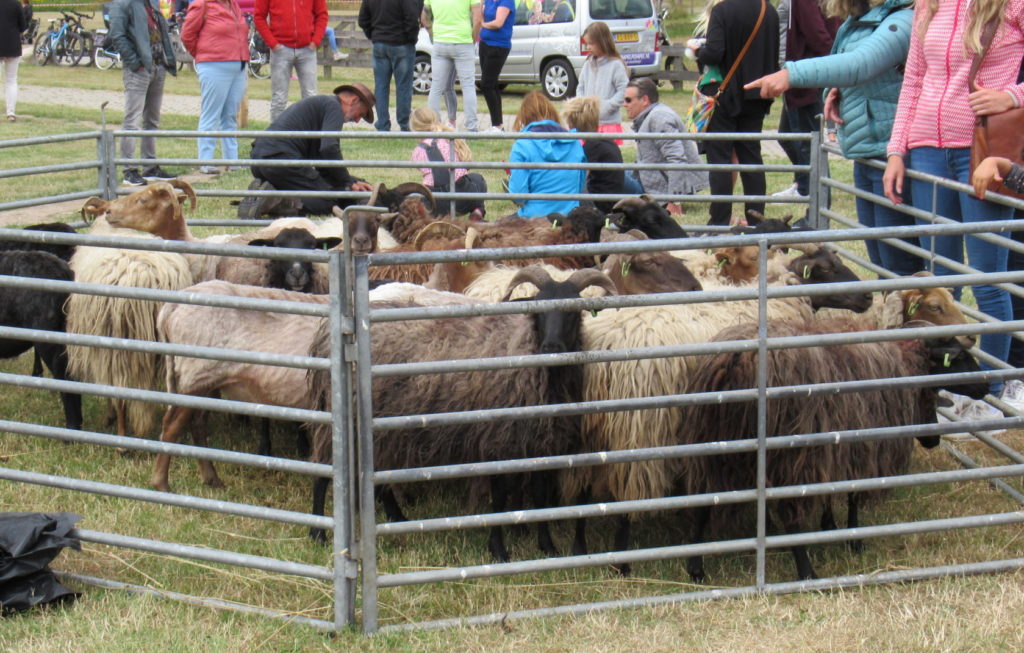
The sheep they’ve chosen is then dragged out from among the others. It is placed in a rather unflattering upright position first, and the shearer starts clipping around its neck.
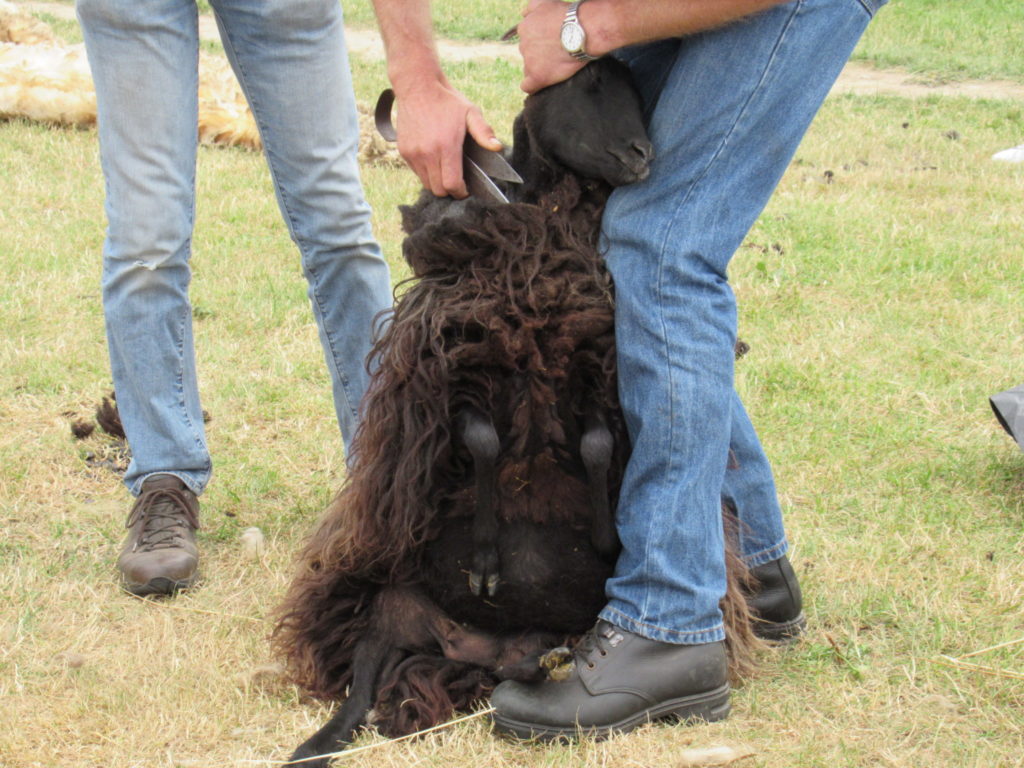
After that the sheep is laid down on its side, and the shearer frees it from one half of its fleece, turns it over and then removes the other half.
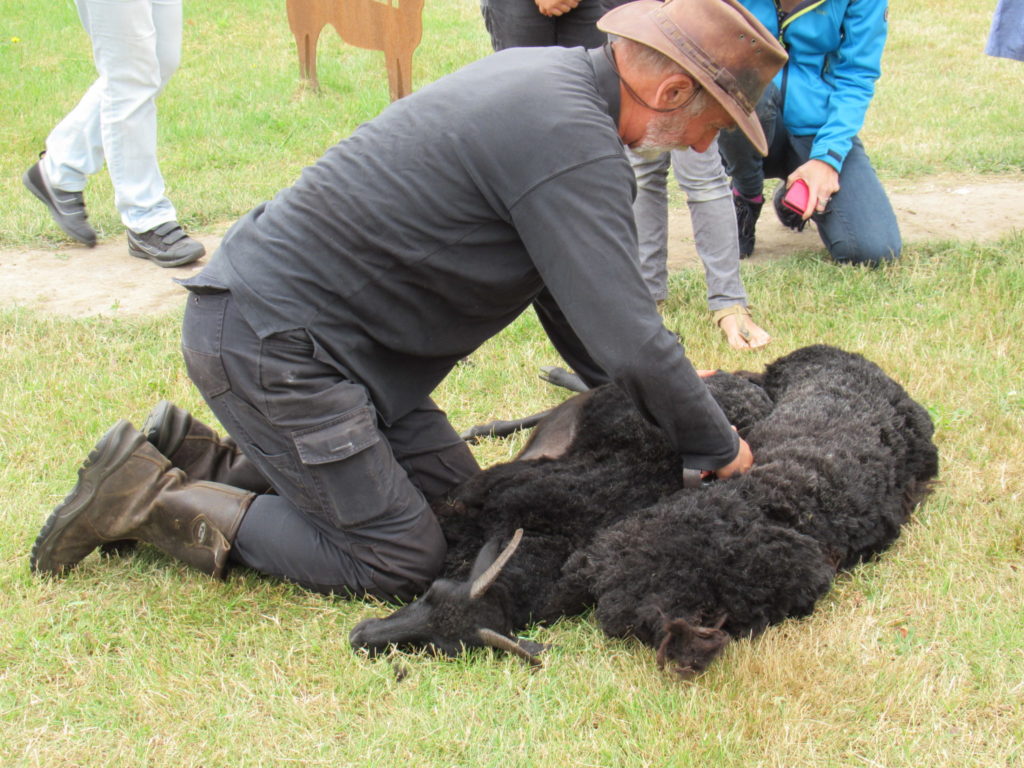
This particular sheep kept very still, and didn’t seem stressed at all. I think it’s because the shearer is very experienced. And he uses hand shears, unlike the farmer at the top of this post. Perhaps that’s less stressful for the sheep, too?
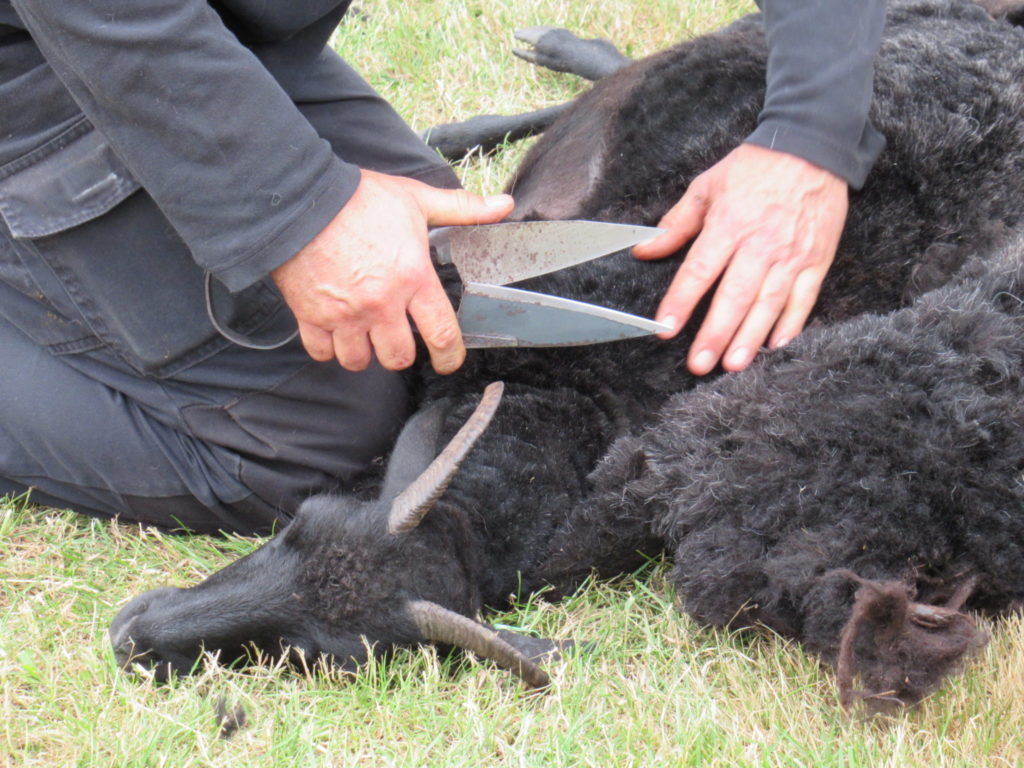
I took the picture below, of an onlooker’s feet, especially for my readers in other parts of the world:
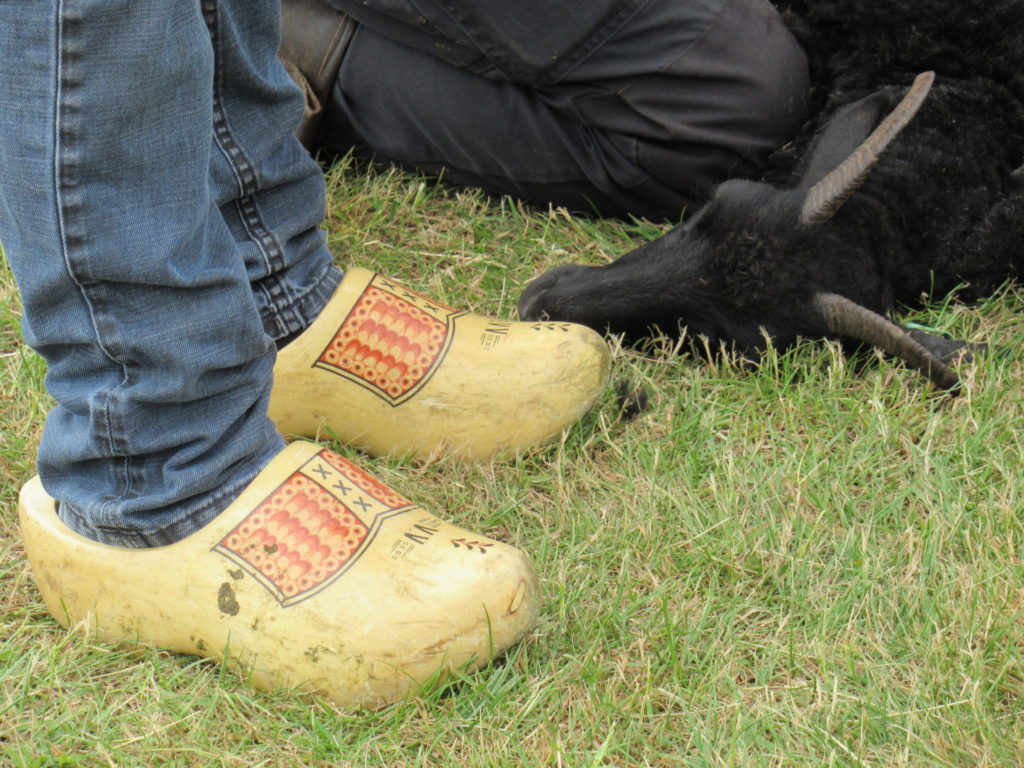
Yes, some of us actually do wear wooden shoes! They’re light, warm, comfortable to wear and even count as official safety footwear. I’ve worn them a lot, and our daughter did too as a small child. (She prefers Jimmy Choos now, though.)
Apart from the actual sheep, there’s a lot of other woolly goodness on offer at these festivals. Fleeces for spinning and felting from various sheep breeds:
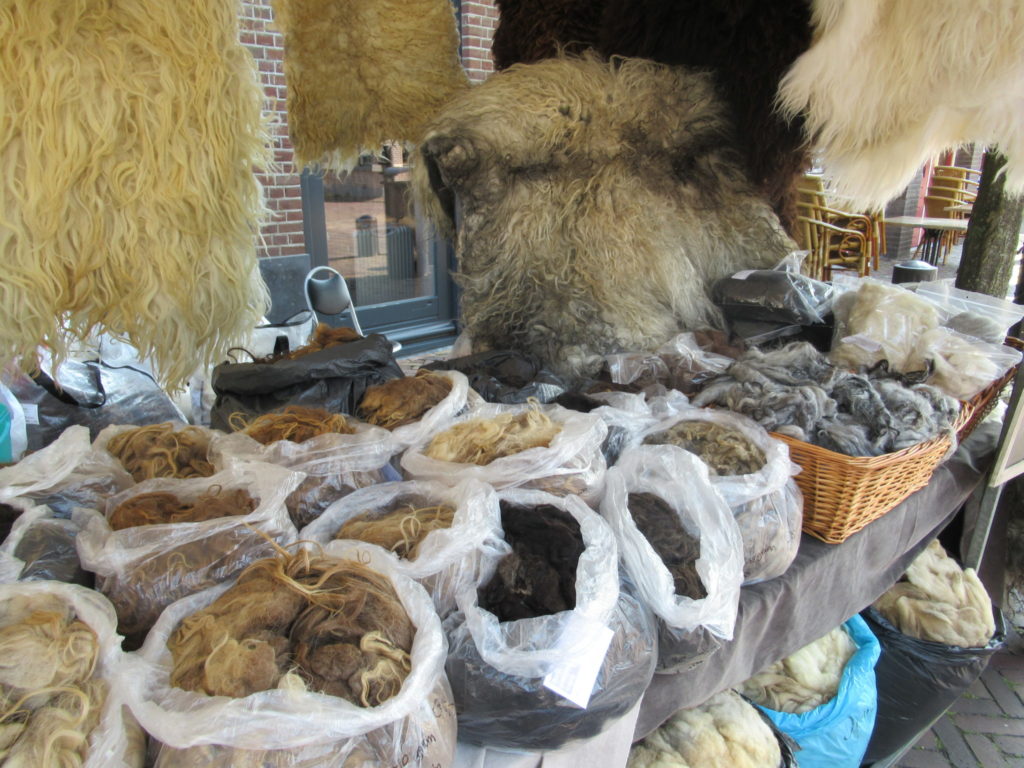
And also lots of lovely hand-made things. I particularly liked these felted slippers, decorated with beads:
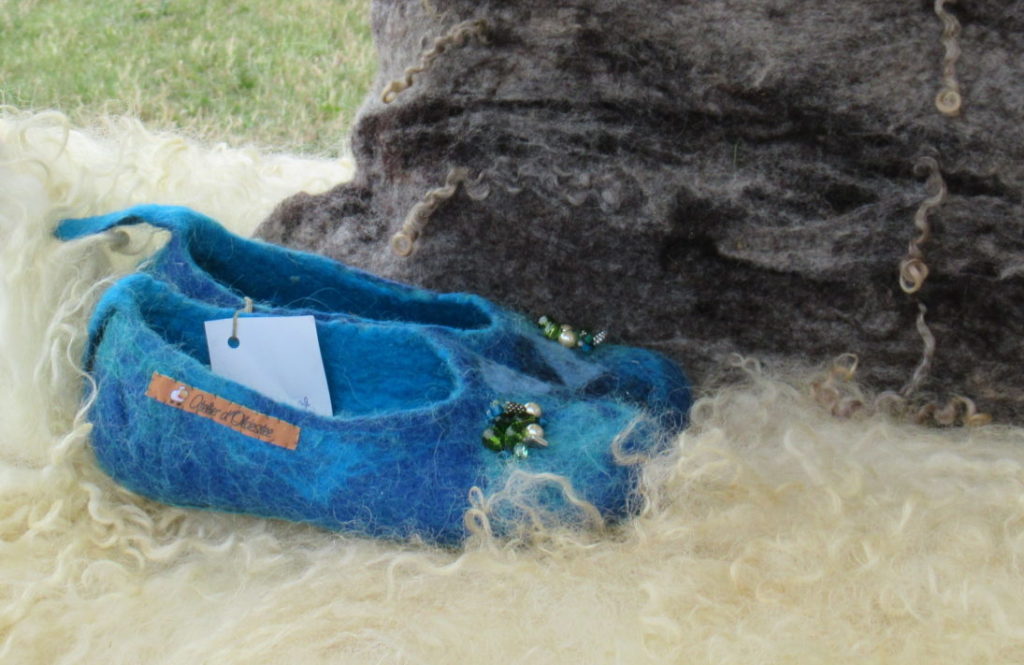
Some people brought along their spinning wheels. This spinner told me that she spun all the yarn for the rainbow of cabled ponchos on the rack next to her, but that somebody else did the dyeing and knitting.
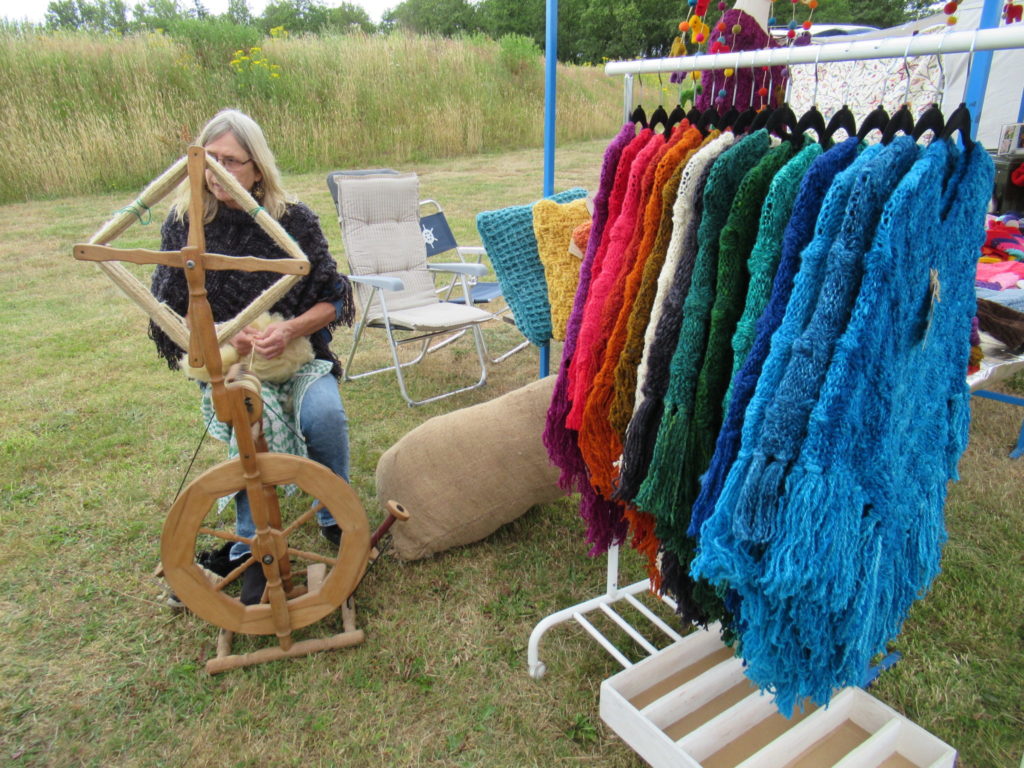
In the photo above you can hardly see the cables, so here’s another one. This one’s taken from the front and shows the stitches and the construction better:
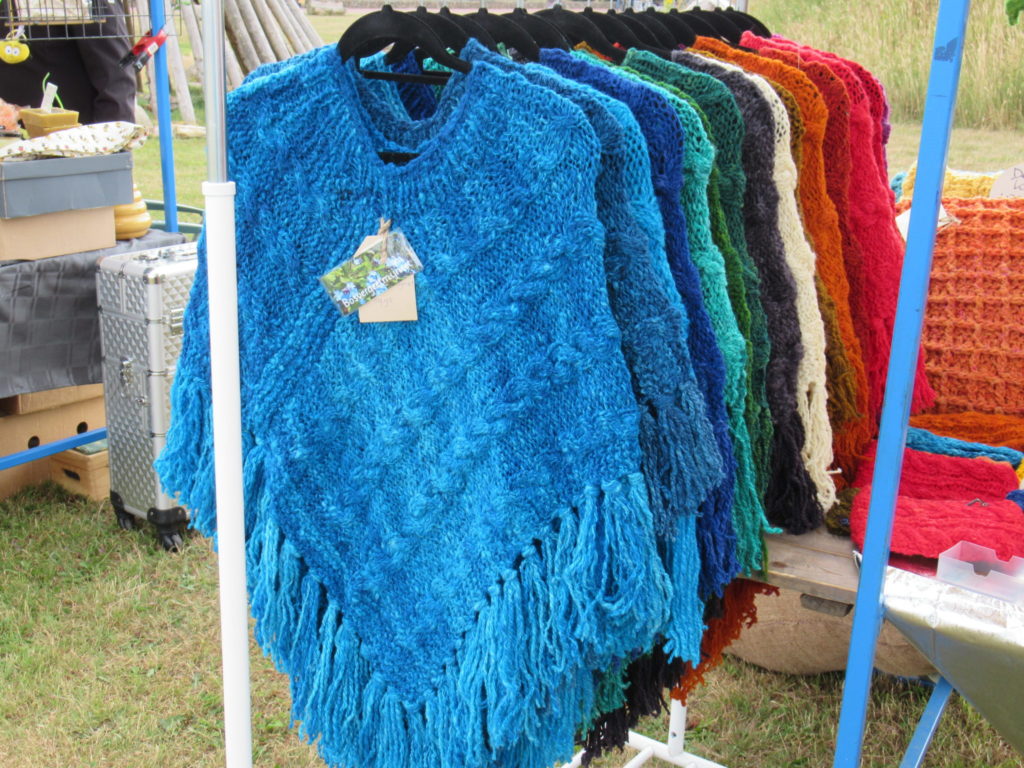
Colourful and cosy, aren’t they?
I thought all sheep shearing would be done by now, but I just found out that there’s another sheep shearing festival and wool market next weekend. If you’re in the area, it’s on Saturday 20th and Sunday 21st of July 2019 at the Shepherds of Balloo. More information can be found here. Judging by the list of participants, it’s going to be a big event.
To close off, here’s a close-up of one of the Drenthe Heath sheep. I think they are just so photogenic, don’t you agree?
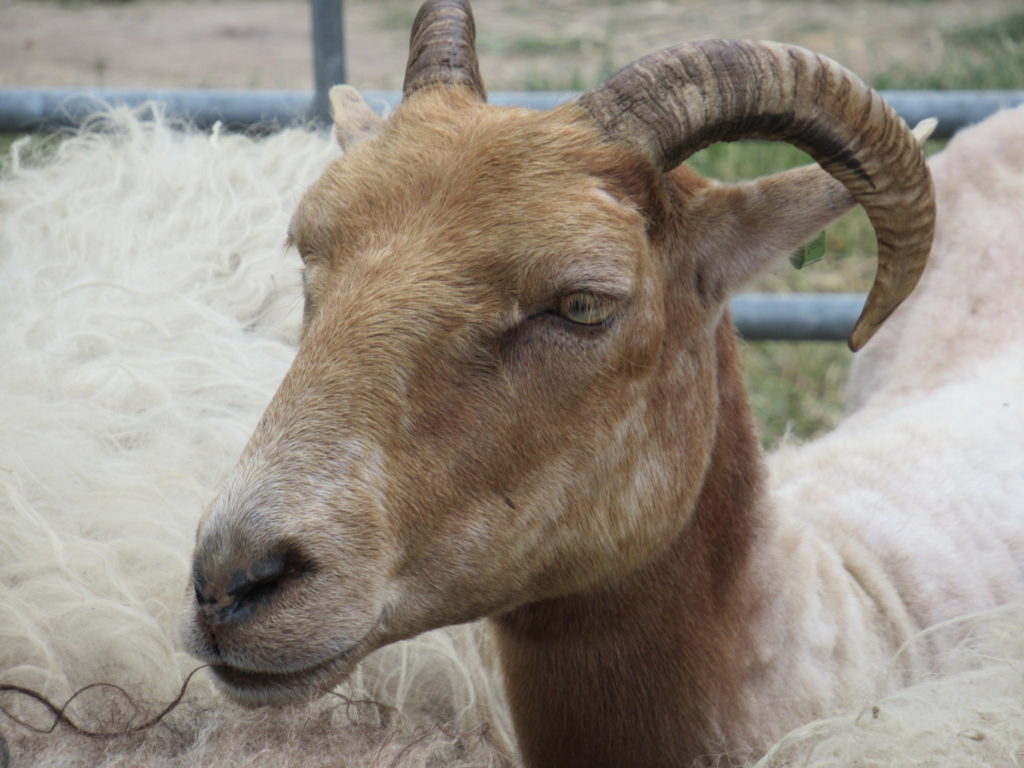
Balloo Wool Studio
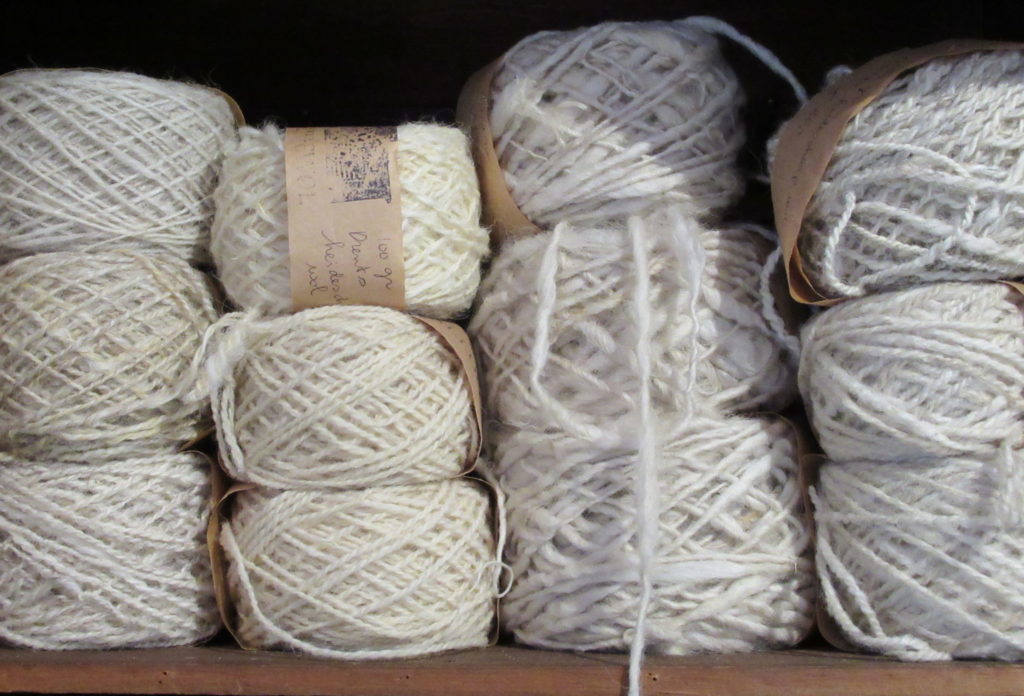
Two days off plus a weekend with few planned activities gave me a lot of uninterrupted knitting time. I spent it knitting my Stay Soft shawl – row upon row of garter stitch. When I’d knit about a third of the shawl, I decided to rip it all back and start again (more about that soon). And while I was knitting more and more rows of garter stitch, my mind was free to roam.
I looked ahead, making plans for summer knitting projects. And I thought about spinning, too. I’ve finished plying the yarn on my bobbins, so my spinning wheel is free to take on a new project. I thought of the Drenthe Heath sheep wool I bought a while ago, waiting to be spun up, which made me think back to the day in April we visited the Shepherds of Balloo. And suddenly I remembered that I was going to write about their Wool Studio, too.
So here we are. My train of thoughts has transported us to Balloo Wool Studio:
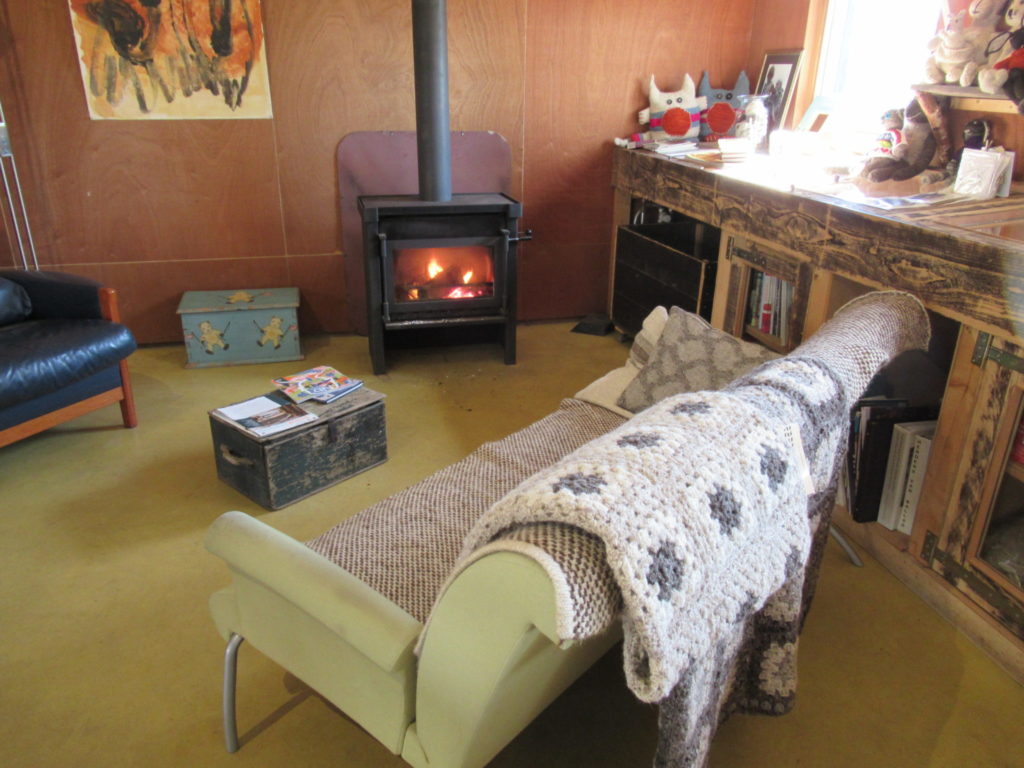
The Wool Studio is housed in a wooden building across from the sheep fold, is open every day of the week, and is run entirely by volunteers. When the weather is nice, tea and coffee are served outside. On chilly days, visitors can warm up inside around the wood stove.
The volunteers have created a really cosy place, with books on the shelves and playthings for the children. And everywhere you look there is wool. Hanks of handspun wool hanging from a thick branch,
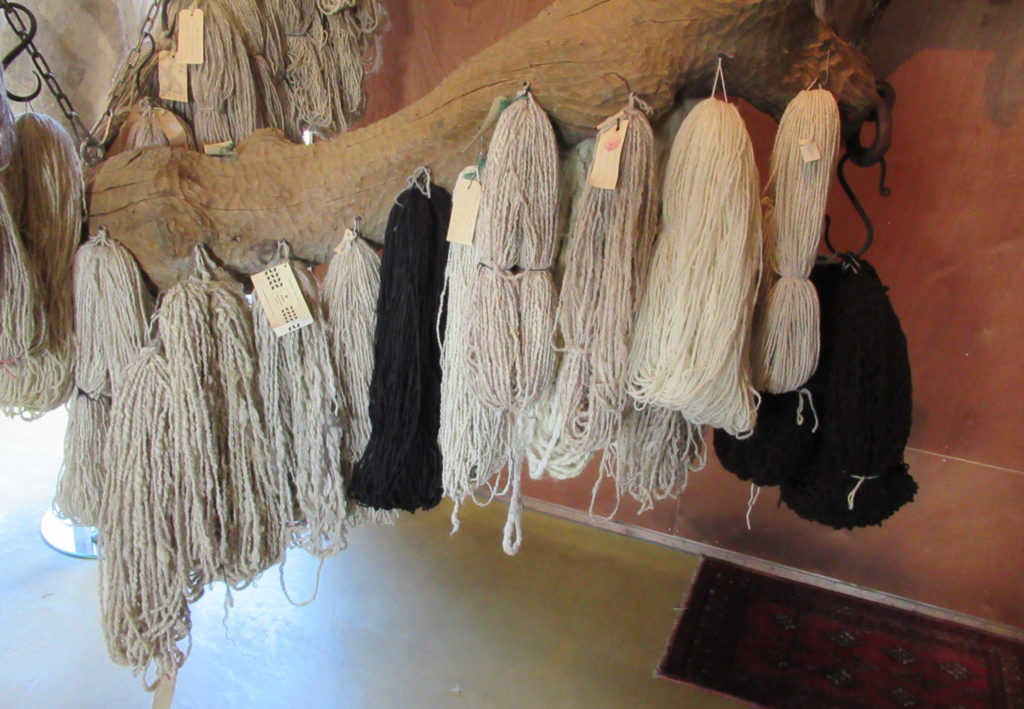
handspun wool on balls, and handspun wool made into blankets, sweaters, shawls, socks and much, much more.
Knowing how long it takes to spin up 100 grams of yarn, let alone an entire fleece, I was amazed by everything I saw. There was so much to see and such a lot of variety. Not just in the type of projects chosen, but also in thickness (or fineness) of the yarn used, and in the techniques.
On the sofa were two crocheted throws, made from grannie squares and thick yarn in various natural colours.
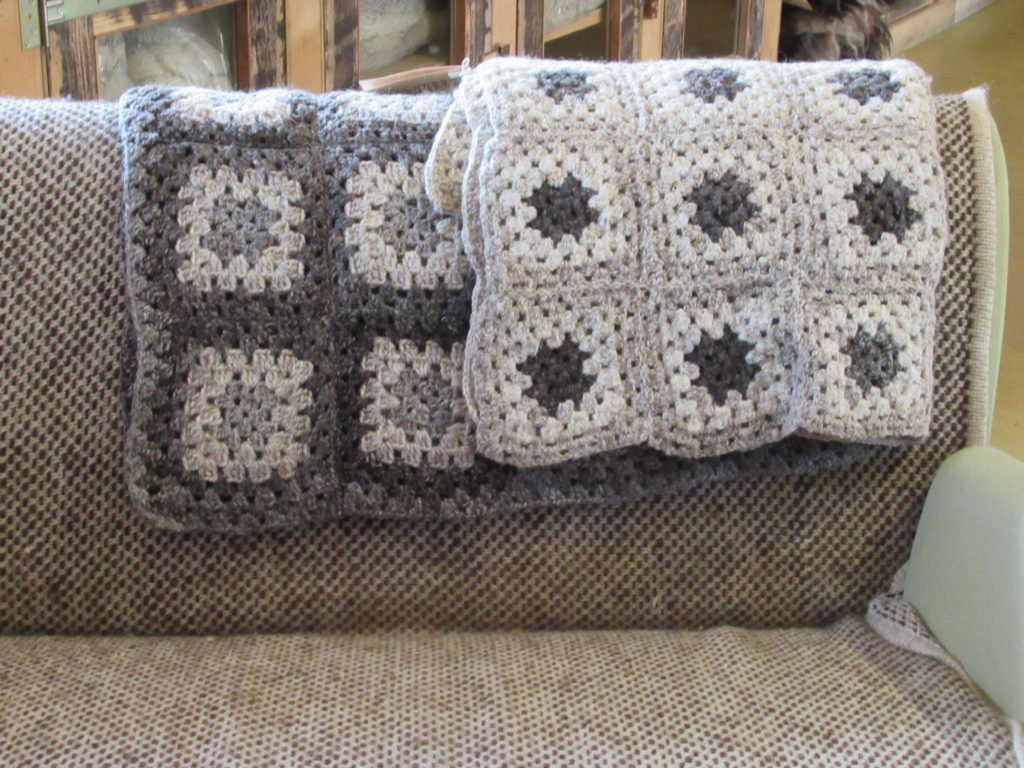
There were stacks of handknit items in a beautiful antique cupboard. Sweaters in all kinds of stitch patterns and a shawl with a knit-in sheep pattern.
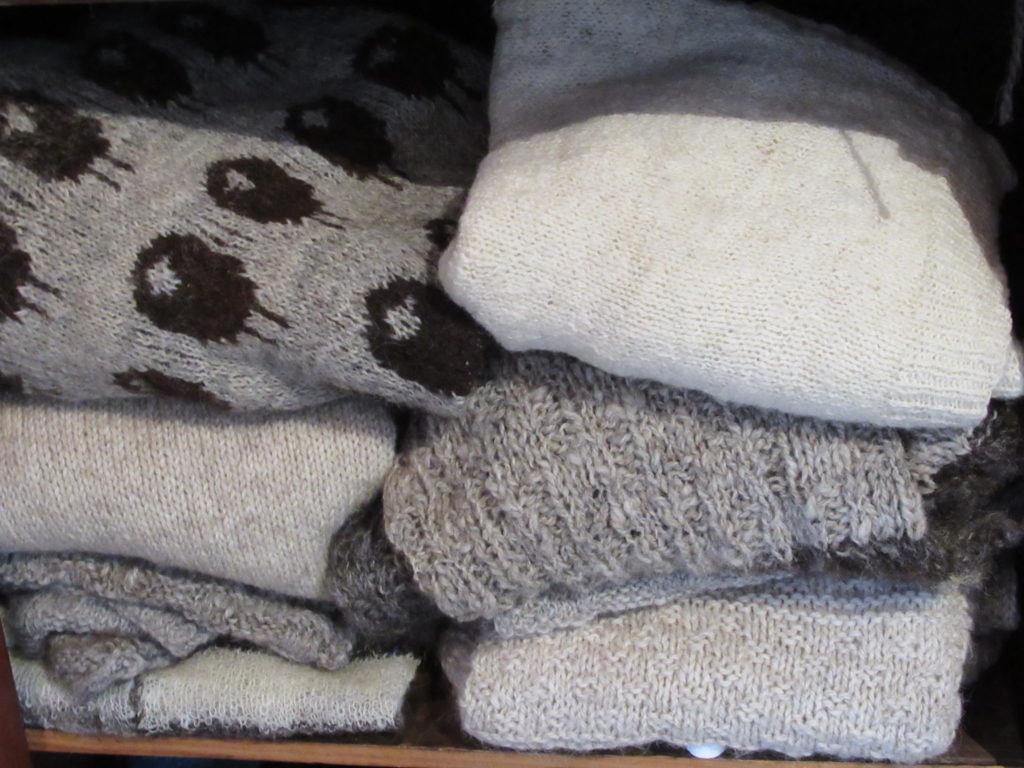
Hanging in front of a window was a narrow scarf that made me look twice. What’s that? It doesn’t look like knitting or crochet. It isn’t woven either. What can it be? Oh, wait a sec, I think it may be bobbin lace.
What a great idea! Especially with the thick thread meandering through it. Here’s a detail:
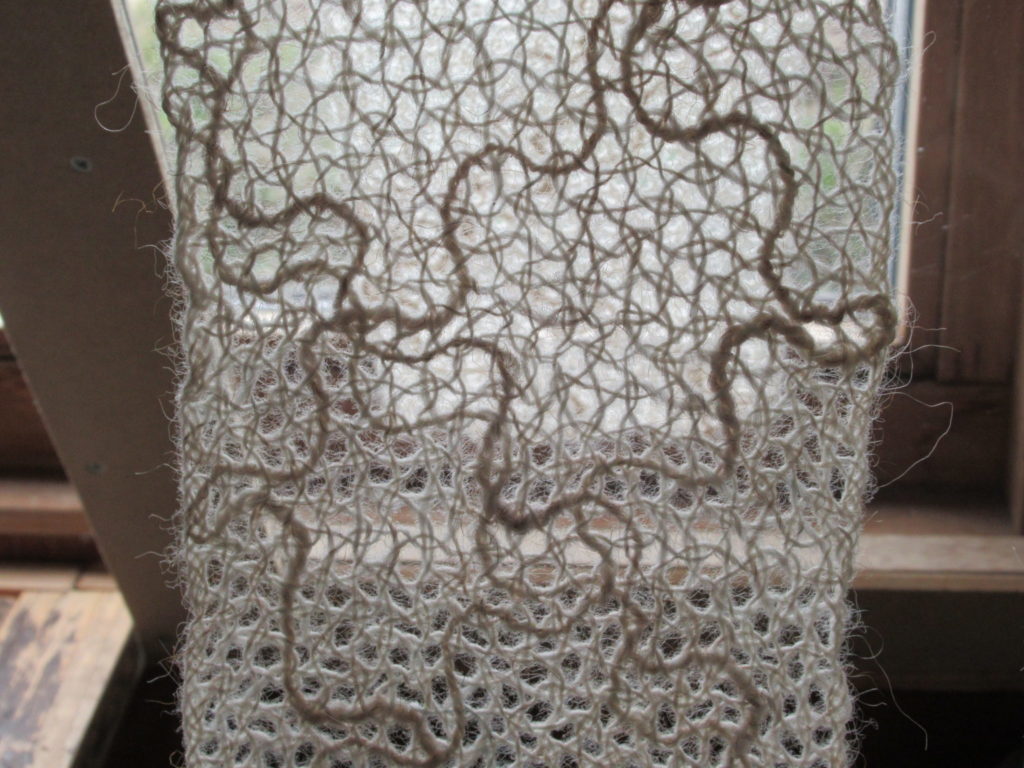
What struck me was that almost everything I saw, was in the natural colours of the Drenthe Heath sheep fleeces. The only exceptions were a few brightly dyed balls of yarn on a shelf and this pair of adorable baby booties, with some green and red accents:
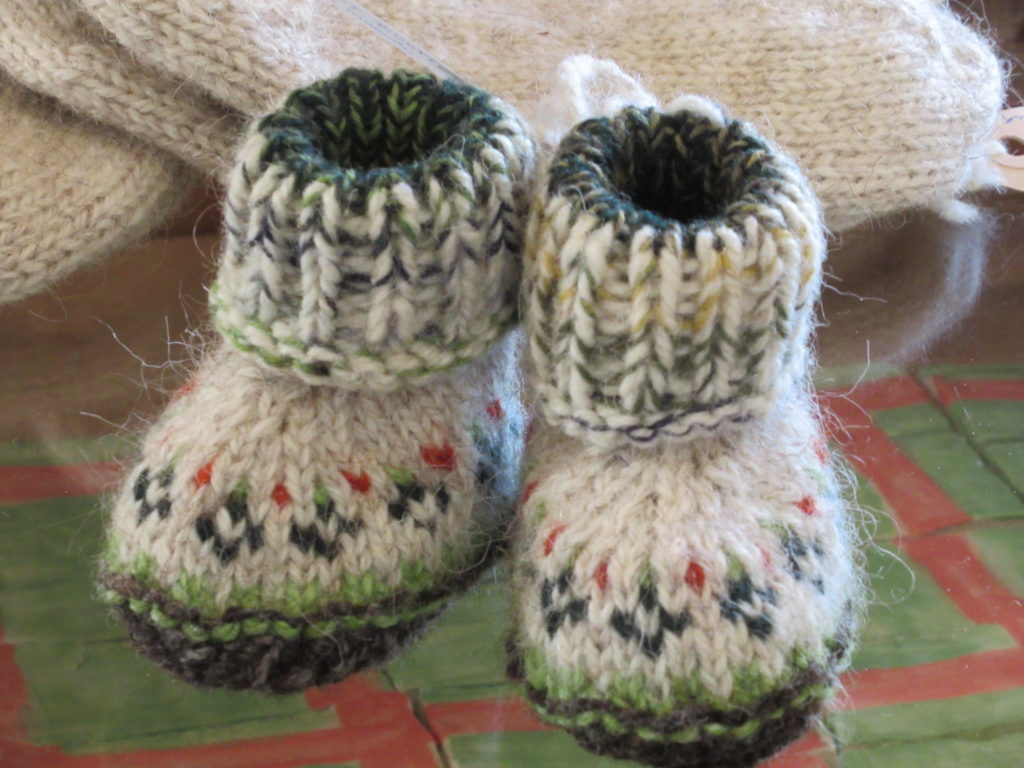
Other than that, everything was in one or more of the shades of white, grey, brown and black the Drenthe Heath sheep have to offer.
I think it’s wonderful what the people at Balloo Wool Studio have done with the fleeces of their flock. It’s so good to see that not all of our local wool is bought up for next to nothing to be shipped to China for low-grade uses.
Now it’s my turn to do something with it, too. As I told you in my previous blog post about The Shepherds of Balloo, I bought some unspun Drenthe Heath sheep wool during my visit – a plastic bag filled with batts of washed and carded wool:

I’m not a terribly productive spinner, so I only bought a small quantity. At a recent crafts event, I met the woman who washed and carded it. But that’s a story for another time…
The Shepherds of Balloo
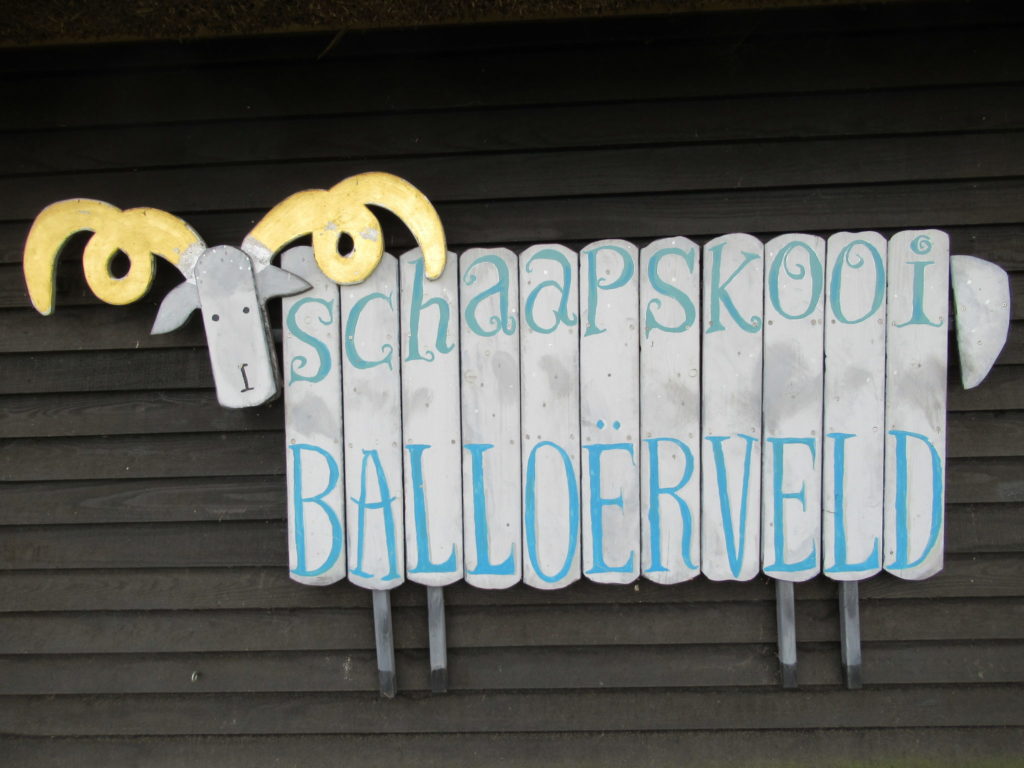
On Sunday morning we decided on a whim to pay the shepherds of Balloo a visit. It was a lovely day for a walk and I hoped we would see some newborn lambs.
When we arrived, the doors of the sheep fold were open. We could see that it was empty and the sheep were out, which was only to be expected in the middle of the day.
In 2011, the old fold was destroyed by a terrible fire. Fortunately, enough money could be raised to rebuild, and there is a new, very light and airy fold now.
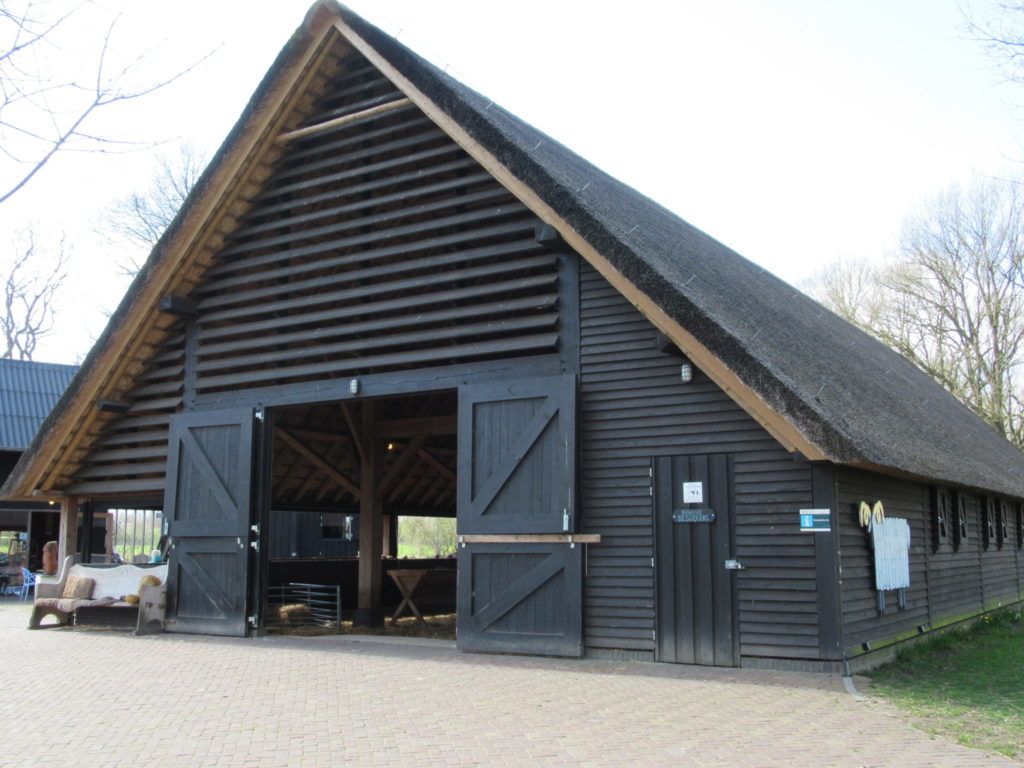
Looking inside we could see the fresh, golden straw on the floor and the wooden feeders filled with hay. In cold and wet weather the ‘windows’ can be closed with a kind of roller blinds.
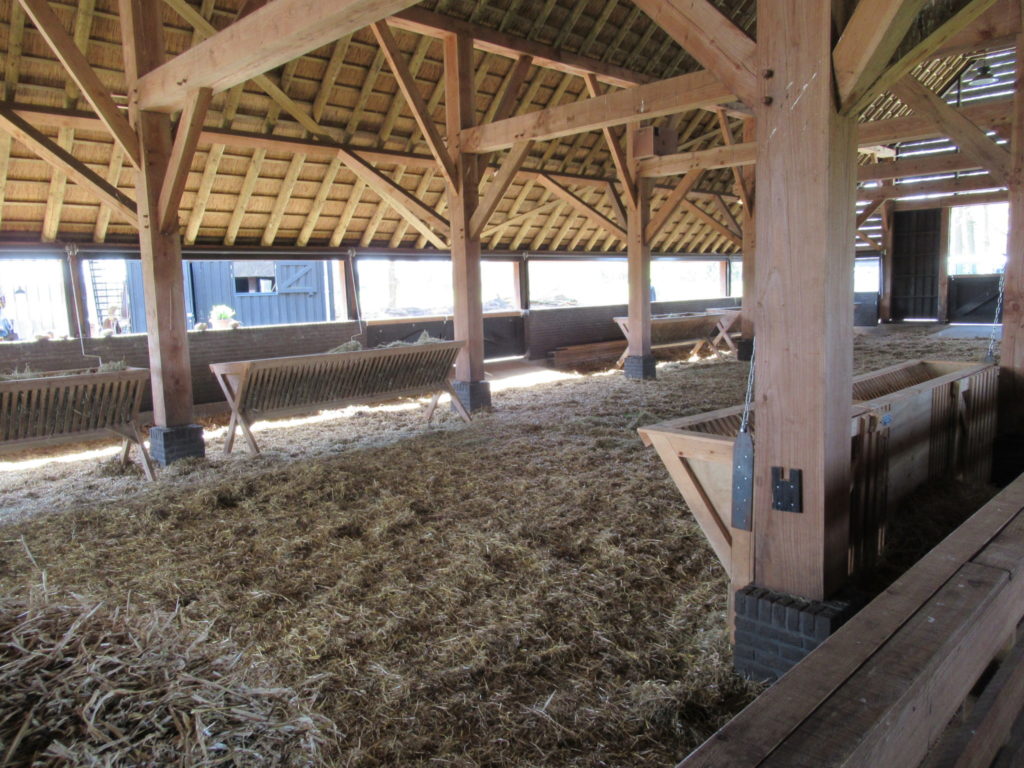
The area where these sheep roam is not very big, so we should be able to find them. The wind was a bit nippy, but otherwise it was a lovely dry and bright day. The start of our walk took us along a cycle track:
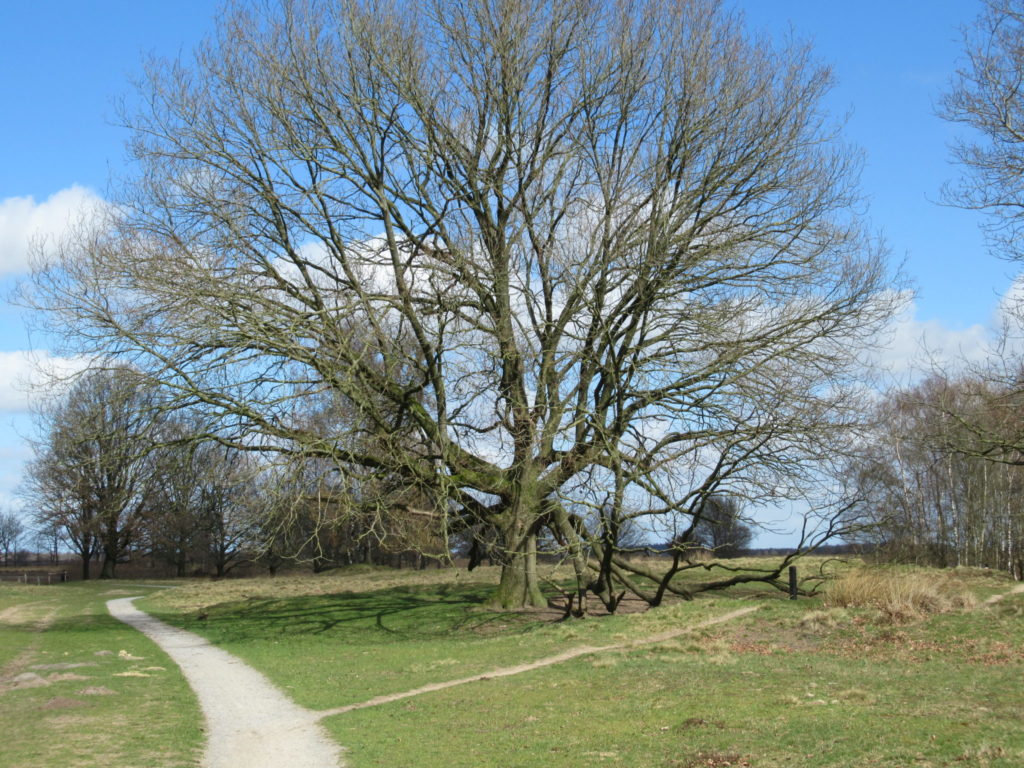
Very soon we turned right, onto a sandy path and the heath. Although spring has arrived in our garden, the landscape here still looked bare and wintry.
I haven’t discovered how to share the sounds and smells of our walks with you here other than catching them in words, so that’s what I’ll try to do. Well, I don’t know about the smells, but for a soundtrack to this walk think of the soughing of the wind and the song of skylarks, climbing higher and higher into the sky. Nothing else. No cars, no planes, no traffic noise at all.
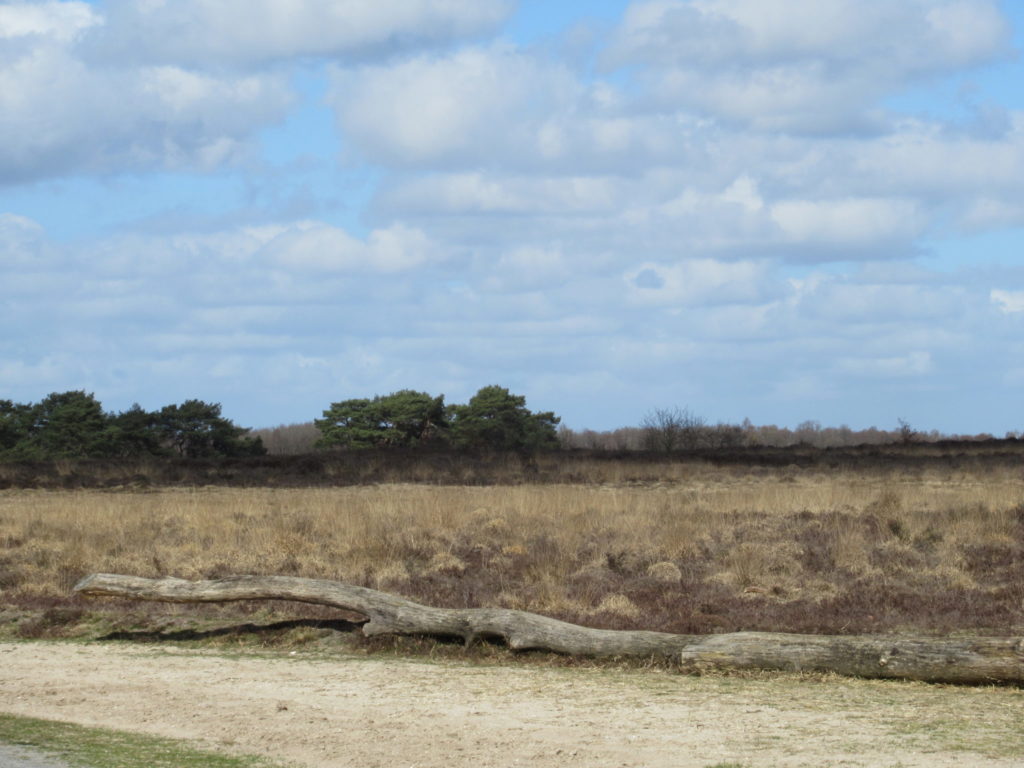
We didn’t have to walk very far before we spotted the flock of sheep in the distance:
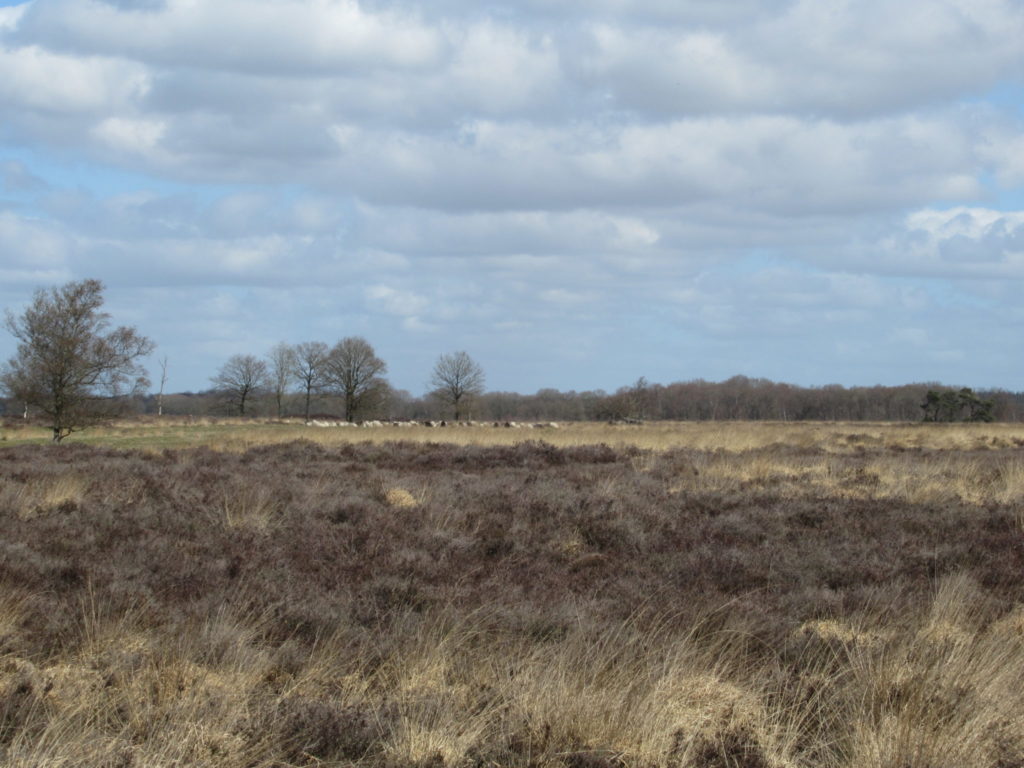
Walking on, we lost sight of them for a while. Why? Well, in my pictures the landscape looks flat, while it is in fact slightly undulating. But soon enough, climbing a hillock, we suddenly saw them again. And sitting in a sheltered spot, leaning against his rucksack, was one of the two shepherds who own this flock, keeping an eye on his sheep.
And he was not alone. His two sheep dogs were with him. One of them is a border collie, like many other shepherds in this area have. And the other one is an Australian Kelpie. Meet Woods:
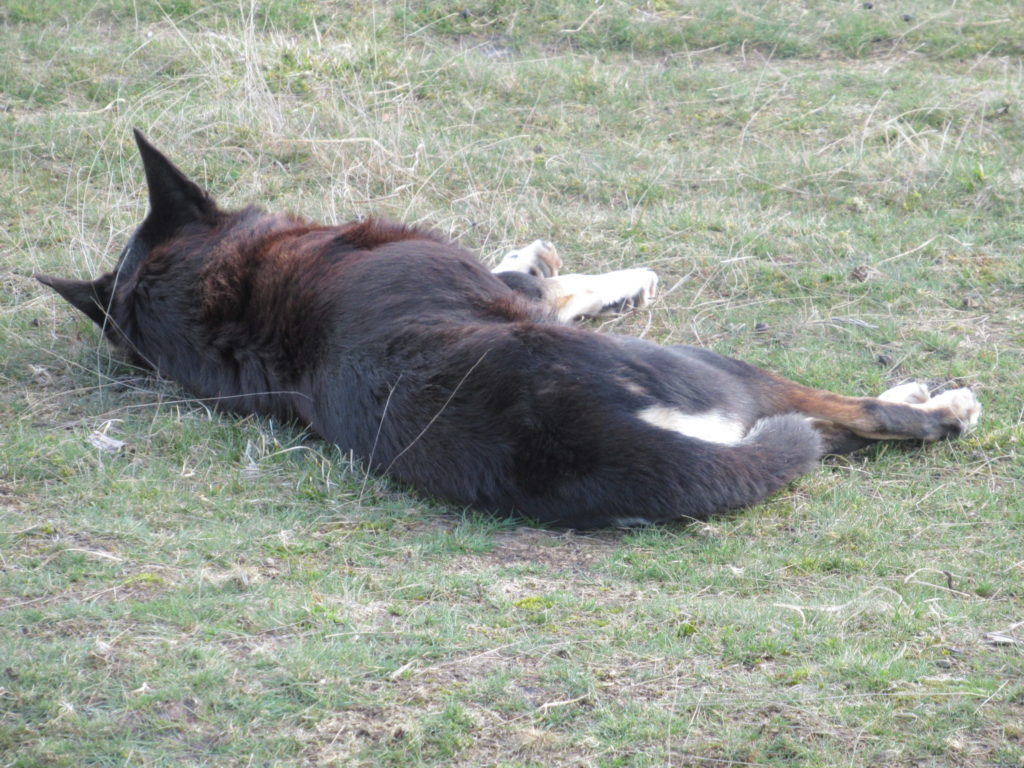
Oh, what a lazy dog! Just lying around enjoying the sunshine instead of minding the flock. Or is he? Look at his ears – they are not resting at all, but on the alert all the time. And as soon as they register something he sits up:
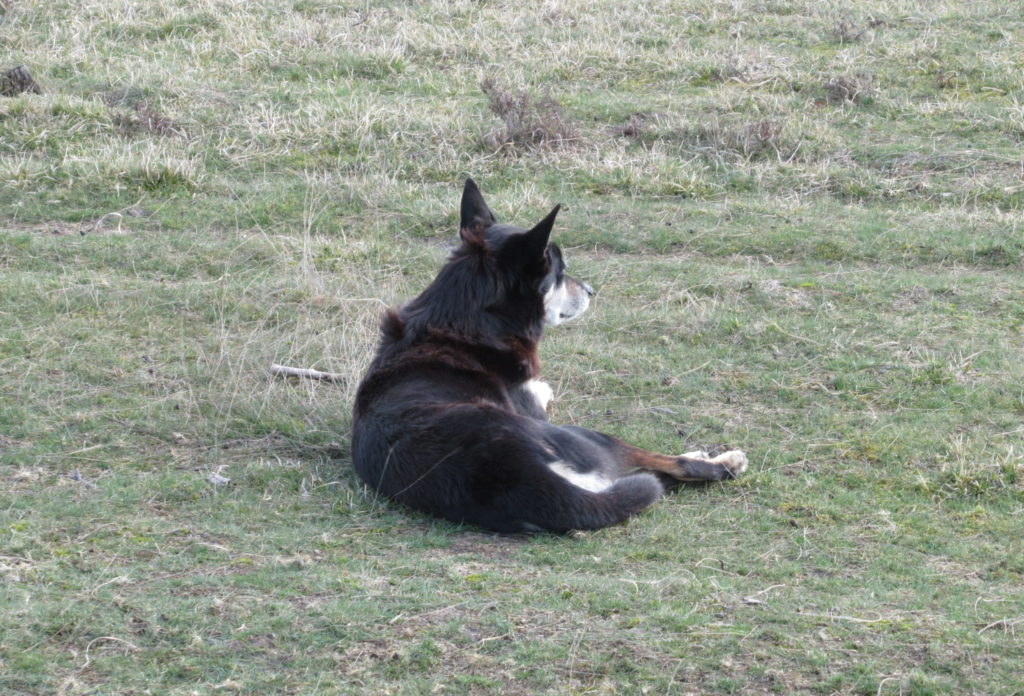
The shepherd told us that Woods is a dog with a natural instinct for herding. A really reliable dog. ‘If we get back to the fold at the end of an afternoon and Woods keeps looking back, you can bet your boots that there’s a stray lamb left behind,’ he said.
Talking about lambs – where are they? Well, as it turns out we were a bit early in the year. There were only six lambs as yet. They were hidden among the adult sheep, but I was able to take a snapshot of two of them. Can you see them?
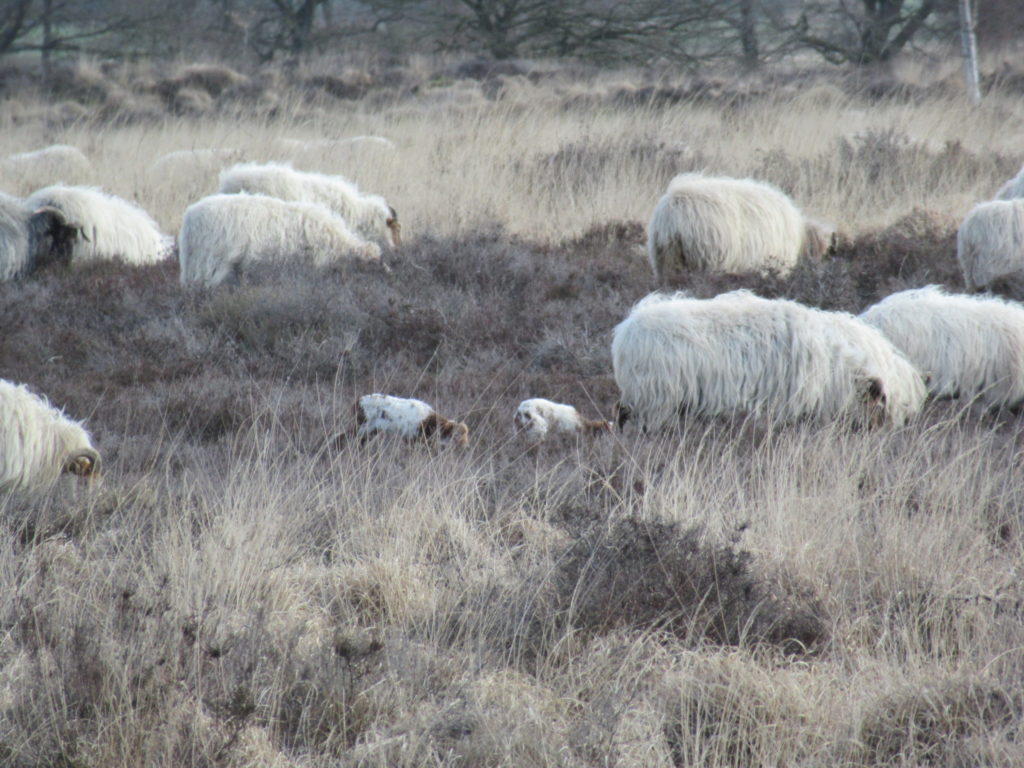
These sheep are again of the Drenthe Heath sheep breed, about which I wrote in A Chat with a Shepherd. And here, too, their main job is nature conservation.
The shepherds of Balloo have the biggest flock in this part of the country, with over 400 sheep before the lambing season. As is usual for Drenthe Heath sheep, their colours range from (almost) white to black, with other colour variations in between.
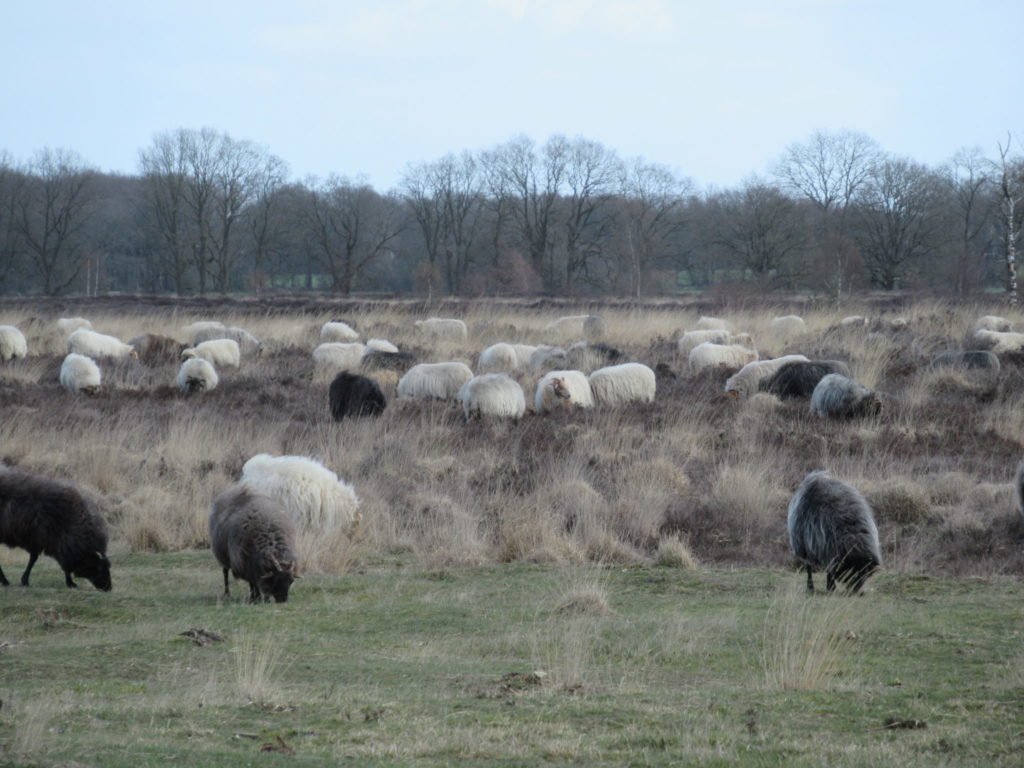
What interests me, of course, is what happens with the wool. In the Middle Ages wool was an economic factor to be reckoned with, and the wool trade brought great riches to parts of Europe. But we live in different times.
At my knitting group, last week, I was shocked to hear that another shepherd with Drenthe Heath sheep receives literally nothing at all for his fleeces! His fleeces are shipped to China, as some kind of waste product, to be used in the carpeting industry.
At Balloo things are looking better, I’m glad to say. Along one wall of the fold I saw stacks and stacks of plastic bags filled with fleeces.
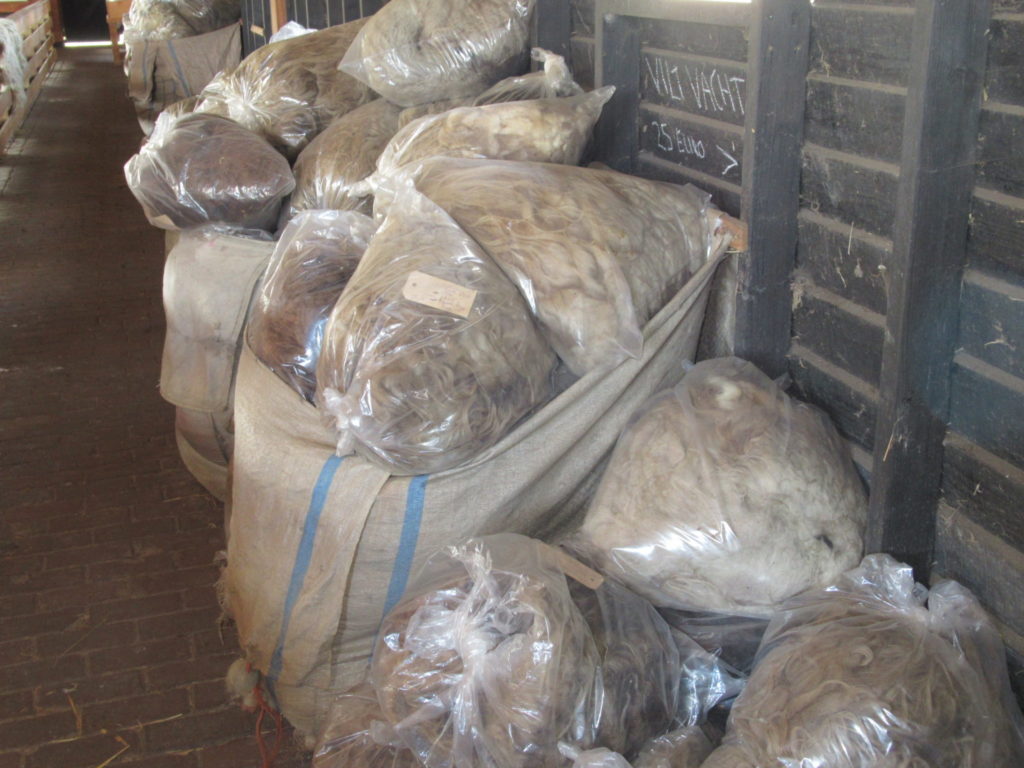
Fleeces in all of the colours Drenthe Heath sheep come in are offered for sale. Each bag has a label describing the specific properties of that particular fleece. I read things like: ‘Ideal for felting’, ‘Good quality for spinning’, ‘Fleece with especially long locks’, etcetera.
An entire fleece would be too much for me, at the moment, but fortunately I was able to buy a smaller quantity of wool. I am looking forward to trying out how it feels in my hands and how it spins up. I need to finish spinning and plying some other wool on my bobbins first, but when I have something to show, I’ll definitely let you know.
More information
There are two websites dedicated to the Balloo sheep. I don’t quite understand why. One seems to be the shepherds’ own website, and has information about the flock and the wool studio (more about that some other time). The other website provides similar information about the flock, as well as a description of the landscape.
A Chat with a Shepherd
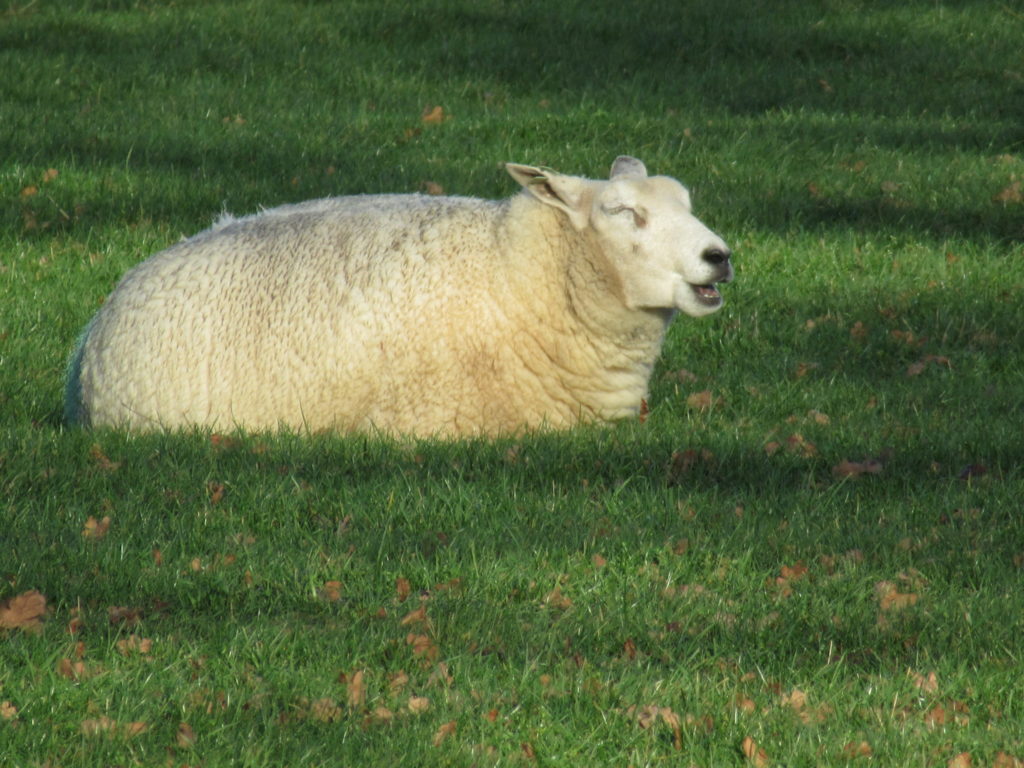
By far most of the sheep surrounding us are of the well-known Texel breed. Stocky, white-fleeced sheep, like the woolly lady enjoying a bit of wintry sunshine in the picture at the top of this post.
When I started spinning, decades ago, I only spun Texel wool at first. Simply because it was the only wool I could get at the time. Since then I’ve tried out various other sorts of sheep’s wool and non-sheep fibres. Even some nutria (also known as coypu rat). Ugh, never again! But let’s not get distracted – back to sheep.
We do have other sheep breeds in the Netherlands – 67 other breeds, in fact. (I didn’t know that. I looked it up.) One of these is the Drenthe Heath sheep. There are several flocks of Drenthe Heath in our part of the country, and we sometimes meet them when we’re out walking.
On one of our Sunday walks I already spotted them from a distance. How nice that they’re here today! (We never know exactly where they are – it’s always a surprise.) But when we came closer, something seemed different. Strange. Wrong.
Normally they roam freely over the heath, but this time they were all huddled together.
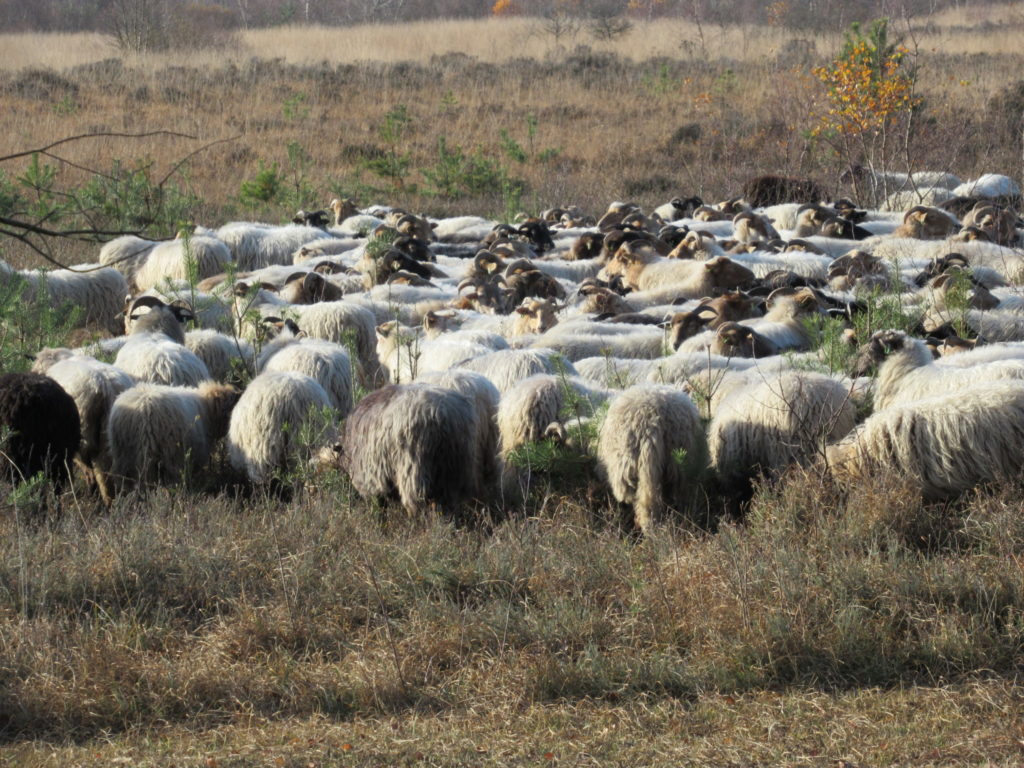
Huddled really, really closely together. Look:
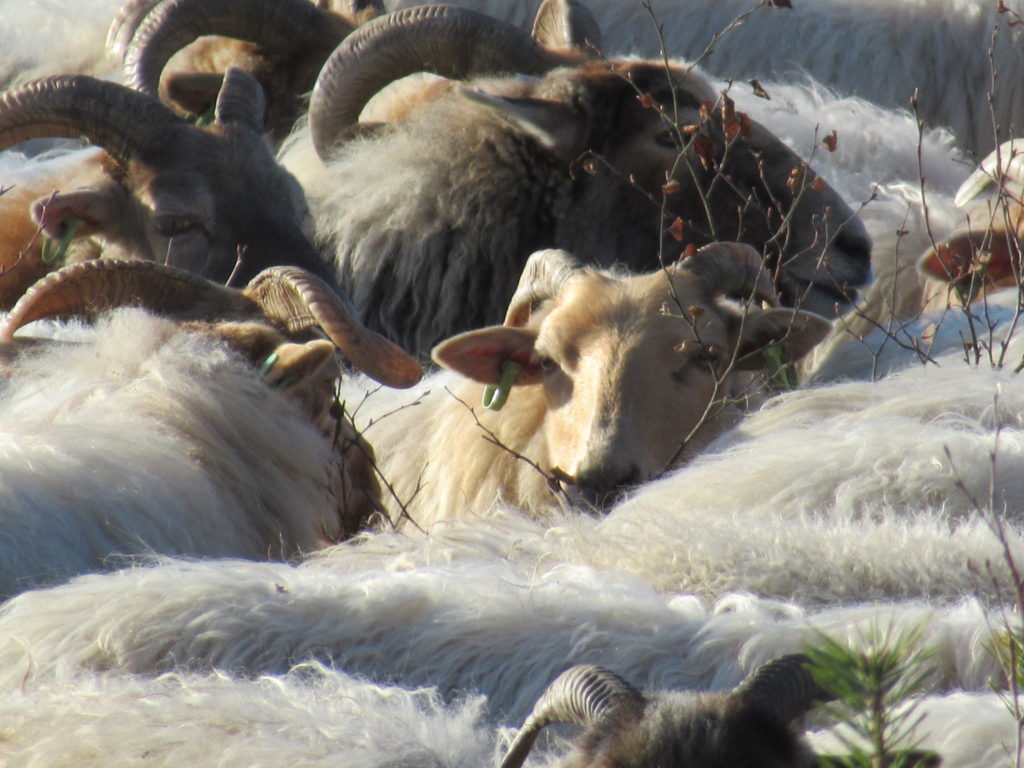
That was decidedly odd! And where was the shepherd? We stood watching the sheep for a while, wondering what was up. Meanwhile I took some close-ups of individual sheep. Most of them are whitish with a brown or golden head and legs, but there are also some grey and black ones among them. (Click on the images to enlarge.)
Then the sheep dog, a Border Collie, came back with the shepherd close on its heels.
We asked him (the shepherd, not the dog) what was the matter, and he told us that one of the sheep had broken a leg, jumping into a ditch. He’d had to carry it back to the fold and herded the rest of the flock closely together to keep them safe while he was away for a while.
He also told us that the flock consists of 380 sheep now. In spring, after lambing, it grows to 700-800. The sheep’s job is nature conservation. Their grazing keeps the heathland open, like this:
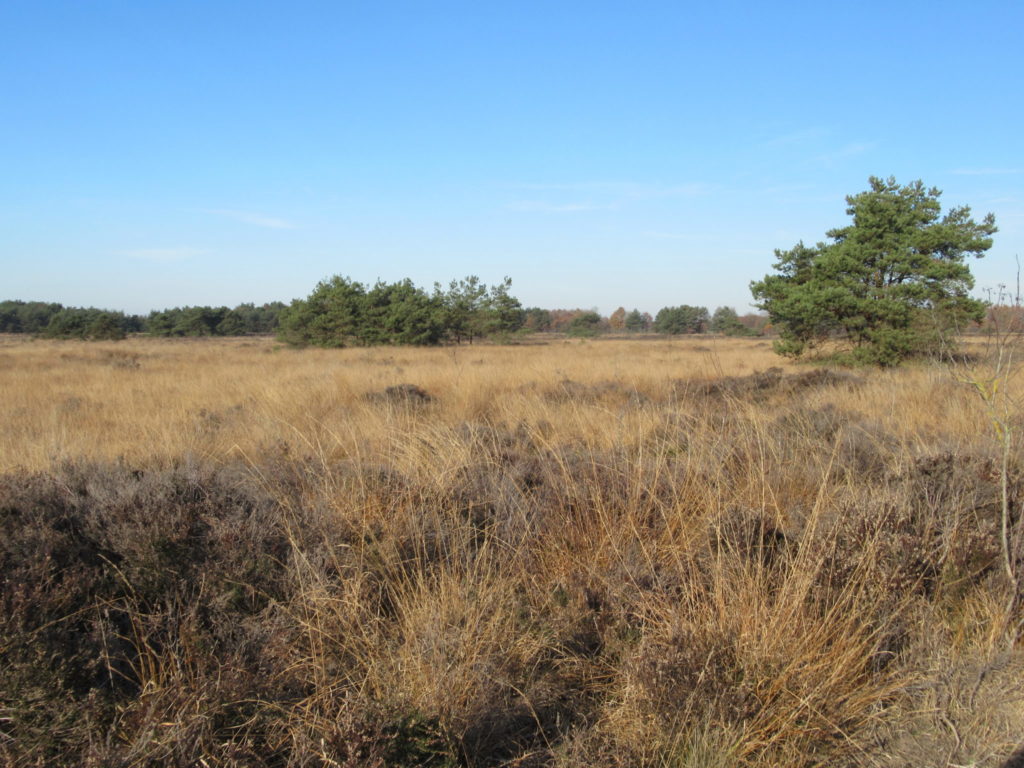
Every sheep eats about 5 kilograms of plant material a day. So, in winter the flock eats 380 x 5 = almost 2000 kilograms per day! Without the sheep, the area would soon be overgrown with shrubs:
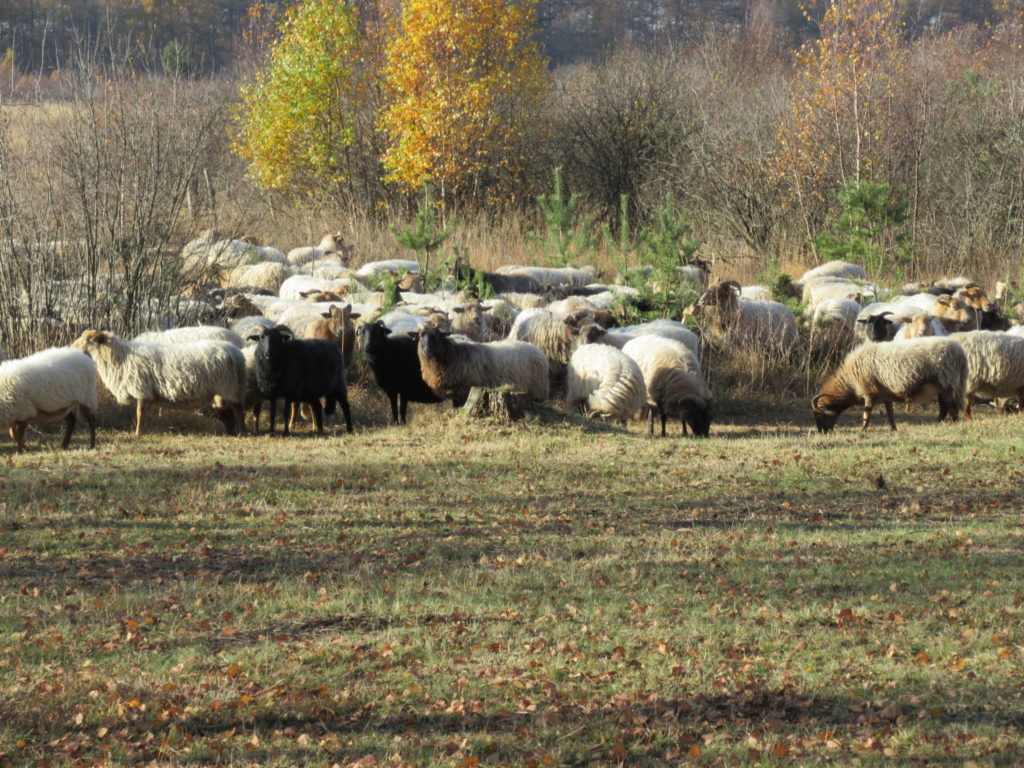
The shrubs would be followed by trees. And the heath, with all its rare flora and fauna, would be gone within a decade. Thank you so much, dear sheep, for preserving this beautiful habitat for us.
Although these are the native sheep around here, I’ve never spun any of their wool. To be honest, I actually know very little about Drenthe Heath sheep or their wool. So when we got home I got out my Fleece & Fibre Source Book.
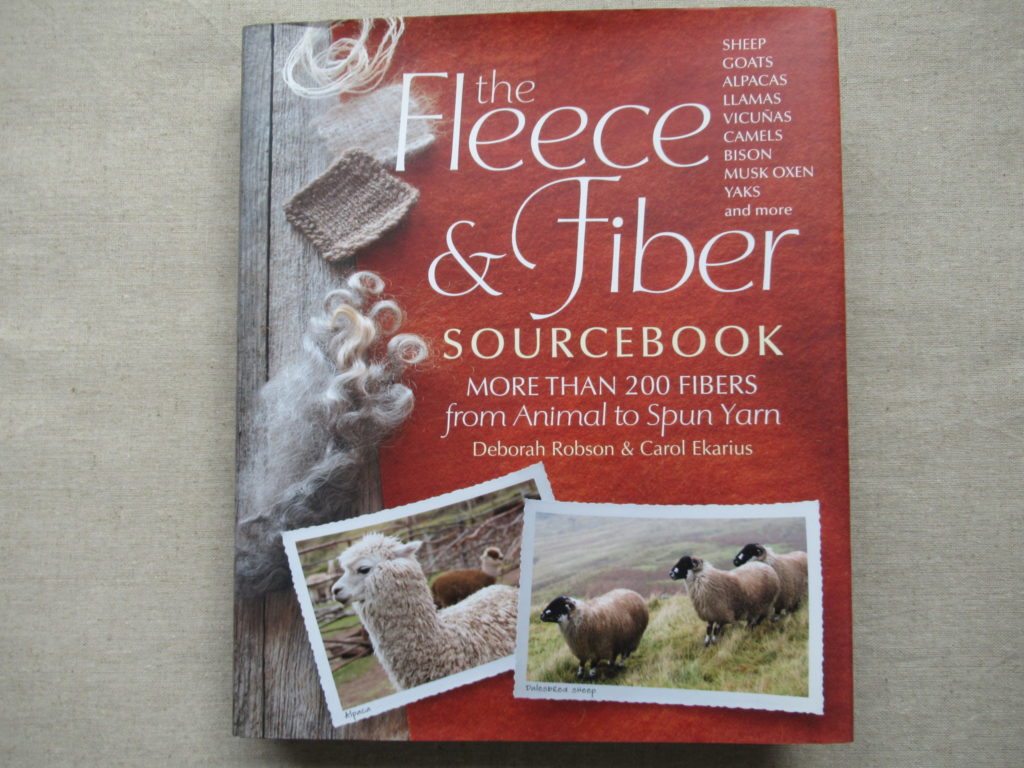
Yes! They’re in the index – go to page 313. And what does it say on page 313? The breed is mentioned under Zwartbles, as one of its ancestors, ‘the horned and hairy-fleeced Drenthe (outside the scope of this volume)’. Not very helpful.
Well, I’ll have to go looking for more information elsewhere. There’s always the internet, of course. Or I could visit some of the flocks and chat with other shepherds. I know that the Shepherds of Balloo have a wool studio, but I’ve never been there. A visit during the lambing season would be something to look forward to.
And maybe I could try spinning some Drenthe Heath wool. I don’t know what it’s like or if it would be suitable for knitting. Do any of you reading this have any experience with the wool? If you do, I would really appreciate it if you’d tell us about it in a comment.
To be continued…
